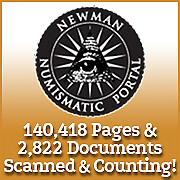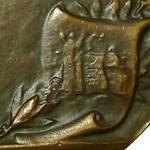
About UsThe Numismatic Bibliomania Society is a non-profit organization devoted to the study and enjoyment of numismatic literature. For more information please see our web site at coinbooks.org SubscriptionsThose wishing to become new E-Sylum subscribers (or wishing to Unsubscribe) can go to the following web page link MembershipThere is a membership application available on the web site Membership Application To join, print the application and return it with your check to the address printed on the application. Membership is only $20 to addresses in the U.S., $25 for First Class mail, and $30 elsewhere. For those without web access, write to: Terry White, Treasurer
AsylumFor Asylum mailing address changes and other membership questions, contact Terry at this email address: terrywhite5475@yahoo.com SubmissionsTo submit items for publication in The E-Sylum, just Reply to this message, or write to the Editor at this address: whomren@gmail.com BUY THE BOOK BEFORE THE COINSale Calendar |
- WAYNE'S WORDS: THE E-SYLUM FEBRUARY 28, 2016
- BRYCE BROWN MAIL BID SALE #2 CLOSES MARCH 5, 2016
- NEW BOOK: GUIDE BOOK OF UNITED STATES COINS, 70TH ED
- NEW BOOK: MIKE'S MORGANS
- NEW BOOK: ISLAMIC HISTORY THROUGH COINS, REVISED EDITION
- AMERICAN JOURNAL OF NUMISMATICS V25 BACK IN PRINT
- DELUXE HARDBOUND POGUE CATALOGS AND BOOKS
- BOOK REVIEW: 100 GREATEST WOMEN ON COINS
- THE EVOLUTION OF MEDAL COLLECTING, BY JOHN SALLAY
- NEWMAN PORTAL SCANS MEHL’S NUMISMATIC MONTHLY
- CAN YOU READ FRANKLIN PEALE’S HANDWRITING?
- JOHNSON “JOHN” GIDEON BINGHAM (1845-1926)
- TRAVELS THROUGH NORTH AMERICA 1825-1826
- E-SYLUM ARTICLE SEQUENCE NUMBERS
- WANTED: RESEARCH ON HALF DIME TOKENS
- MORE ON THE WRONG-WAY BUFFALO NICKEL
- NOTES FROM E-SYLUM READERS: FEBRUARY 28, 2016
- POGUE COLLECTION SALE PART IV ANNOUNCED
- NATIONAL NUMISMATIC COLLECTION PHOTOS SOUGHT
- ANALYSIS CONFIRMS TWO COPPER 1792 PATTERN CENTS
- THE RESURRECTION OF THE FIRST COLUMBIAN HALF DOLLAR
- THE NEW CENTRE MARKET MEDAL
- SOME INTERESTING MEDALS: FEBRUARY 28, 2016
- SELMA FOOT SOLDIERS AWARDED CONGRESSIONAL GOLD MEDAL
- ARTICLE HIGHLIGHTS WWI COMMEMORATIVE DESIGN CONTEST
- THE COST OF COLLECTING ALL 2015 U.S. MINT ISSUES
- MONEY IN EVERYDAY EXPRESSIONS
- QUERY: COLLECTOR G. A. (BENI) BENADOM SOUGHT
- MORE ON COINS COLLECTED BY SIR ARTHUR CONAN DOYLE
- FOREIGN COIN REFERENCES IN SHERLOCK HOLMES
- THE 2016 PALAU TIFFANY ART AMAR SAGAR 50 DOLLAR COIN
- 2016 COOK ISLANDS GREAT TEA RACE OF 1866 TWO DOLLAR COIN
- HOW GOLD COINS ARE MADE
- COIN THIEF WAS CAUGHT USING DNA EVIDENCE
- ARTICLE DESCRIBES QUEST FOR AUSTRALIAN HOLEY DOLLARS
- GAMBIA'S POOR QUALITY POLYMER BANKNOTES
- LONDON SHOW OF ARTIST SANTIAGO MONTOYA'S MONEY MOSAICS
- FEATURED WEB PAGE: BRAZILIAN BANKNOTES & COINS
Click here to access the complete archive
To comment or submit articles, reply to whomren@gmail.com
WAYNE'S WORDS: THE E-SYLUM FEBRUARY 28, 2016

New subscribers this week include: Ray Levato of COINage, courtesy of Ed Reiter, Denice Brackemyre of Heritage Auctions, and Francis Dieulafait. Welcome aboard! We now have 1,951 subscribers.
Welcome also to our newest advertiser Rare Legacy, a new firm specializing in historical medals run by Tony Lopez and Skyler Liechty.
This week we open with a reminder about Bryce Brown's numismatic literature sale, several new books, and one review. Other topics include Mehl's Numismatic Monthly, Franklin Peale's European Mint trip report, coin dealer John Bingham, the Pogue collection, and coins collected by Arthur Conan Doyle.
To learn more about Mike's Morgans, women on coins, a German Duke’s visit to the U.S. Mint, bookbinder recommendations, 1792 pattern cents, the 1822 Half Eagle, the first Columbian Half Dollar, the cost of collecting all 2015 U.S. Mint issues, "smartminting technology" and Santiago Montoya's money art, read on. Have a great week, everyone!
Wayne Homren
Editor, The E-Sylum
BRYCE BROWN MAIL BID SALE #2 CLOSES MARCH 5, 2016
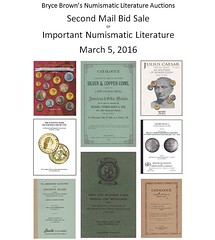 I'd like to remind E-Sylum readers that my Second Mail Bid Sale of numismatic literature will close in a few short days: this
Saturday, March 5, 2016 at 8:00 PM EST. Bids may be submitted via email, fax, mail, and phone. Please don't wait until the last minute to bid -
and risk forgetting (as I've done a few times myself!) and consequently lose out on obtaining some outstanding material. My condition grading is
conservative, and there are infrequently-found items and excellent values to be had in all categories. The entire catalog may be viewed at my new
website: www.bbnla.com.
I'd like to remind E-Sylum readers that my Second Mail Bid Sale of numismatic literature will close in a few short days: this
Saturday, March 5, 2016 at 8:00 PM EST. Bids may be submitted via email, fax, mail, and phone. Please don't wait until the last minute to bid -
and risk forgetting (as I've done a few times myself!) and consequently lose out on obtaining some outstanding material. My condition grading is
conservative, and there are infrequently-found items and excellent values to be had in all categories. The entire catalog may be viewed at my new
website: www.bbnla.com.
Bryce Brown's Numismatic Literature Auctions
P.O. Box 16
Avon, CT 06001-0016 USA
email: numismatics@att.net
Phone: 860-751-2555
Fax: 203-900-0249
www.bbnla.com.
- Seldom-offered Edward Cogan auction catalogs and addenda letters
- Two Christie’s 1950 sales of the George Mikhailovich Russian collection, one priced and named
- The catalog of the Reverend John Suchos collection of Polish coins
- The 1949 Christie’s sale of the Fitzwilliam collection of Roman Imperial coins, priced and named
- Bank Leu’s sale of the Nicolas collection of Roman Republican silver
- The rare Numismatic Fine Arts “Julius Caesar” auction of May 1991
- Stack’s Galleries 1952 sale of the Sobernheim collection
- A complete hardbound set of David Akers’ John Jay Pittman sale
- A large group of M.H. Bolender auction catalogs
- The deluxe hardcover edition set of Bowers & Merena’s Harry W. Bass, Jr. sales
- A reference collection of Sheridan Downey sales 1-38 and related publications
- Large paper Thomas Elder sale of the Henry C. Miller collection, ex Howard D. Gibbs
- Thick paper edition of Elder’s 196th sale
- Several Parke-Bernet consignor and bid-books
- A large number of rare Wayte Raymond publications
- A large and rarely-offered group of Stack’s catalogs from 1935-1959
- A number of scarce United States Coin Company auction catalogs
- Adams’ United States Numismatic Literature, Volumes 1 & 2
- A lovely and scarce Early United States Dimes 1796-1837
- A John Reich Journal Volume 1, Number 1, in gem new condition
- A Deluxe Full Leather edition of Kagin’s Private Gold Coins and Patterns of the United States
- A presentation edition of Martin Logies’ Flowing Hair Silver Dollars of 1794
- Ray Malone’s rare limited edition of Numismatic Auction Catalogues Relating to the Historical Coinages of Canada
- A large group of Coin Collector’s Journals, bound in Publishers Cloth
- Stack’s Numismatic Review, complete, 1943-1947
- Rarely-seen Harold Thomas bibliographies
- A large group of Reports of the Director of the U.S. Mint
- The extensive Landlubber Reference Collection of shipwreck auction catalogs
- Several “missing from Gengerke” auction catalogs
To read the earlier E-Sylum article, see:
BRYCE BROWN MAIL BID SALE #2 CLOSES MARCH 5, 2016
(www.coinbooks.org/esylum_v19n06a02.html)

NEW BOOK: GUIDE BOOK OF UNITED STATES COINS, 70TH ED
 The newest edition of the Guide Book of United States Coins (known to collectors as the “Red Book”) will debut at the Whitman
Baltimore Coin and Collectibles Expo on March 31, 2016. The 70th edition, with a 2017 cover date, has been expanded by 16 pages and includes new and
completely updated content. It can be pre-ordered online (including at Whitman.com) and after the Expo will be available from booksellers and hobby
shops nationwide.
The newest edition of the Guide Book of United States Coins (known to collectors as the “Red Book”) will debut at the Whitman
Baltimore Coin and Collectibles Expo on March 31, 2016. The 70th edition, with a 2017 cover date, has been expanded by 16 pages and includes new and
completely updated content. It can be pre-ordered online (including at Whitman.com) and after the Expo will be available from booksellers and hobby
shops nationwide.
The Red Book, used by coin collectors to identify and value their coins, prices 7,800 entries in up to nine grades each, with more than 32,900 retail valuations in total. Keeping up with the latest coins from the U.S. Mint, the 70th edition has the newest cents, nickels, dimes, America the Beautiful quarters, half dollars, Native American dollars, Presidential dollars, commemoratives, official Mint coin sets, and bullion coins. It includes 102 new coin issues and 15 new sets. Mintages of modern coins have been updated across the board using the latest government data.
Following up on last year’s expanded coverage of early federal pattern coins, a team of experts led by Senior Editor Kenneth Bressett has created a new section on foreign coins that circulated as legal tender in the British American colonies and early United States. This section includes photographs, history, and pricing for various collectible Spanish-American, Dutch, French, and English coins dating from the 1550s to the 1820s.
Expansions are also seen in the addition of the 1920 Manila Mint Opening medal; an illustrated gallery of significant mint error coins worth $2,750 to $150,000 each; coverage of the American Arts gold medallions of 1980 to 1984; a new appendix on modern U.S. Mint gold and silver medals; and information on modern Satin Finish coins.
As in past years, collectors will benefit from the Red Book’s recent auction records provided for significant rare coins. Listed throughout the charts are more than 170 notable auction results. Combined with the listed retail prices, the auction data help advanced collectors understand the modern market for high-end rarities.

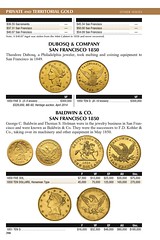
In addition, the appendix of the “Top 250 U.S. Coin Prices Realized at Auction” has been fully updated. Since the last edition 11 more coins have broken the $1 million mark, for a new total of 90. This includes three new coins that auctioned for more than $2 million apiece since the 69th-edition Red Book debuted one year ago.
In a positive measure of the health of the hobby and ongoing numismatic research, the Red Book’s bibliography includes 26 standard references published within the past five years.
The cover of the spiralbound 70th edition shows three beautiful and historic American coins featuring women: a Dolley Madison silver dollar, a Jackie Kennedy First Spouse gold coin, and a Morgan dollar.
To celebrate the Red Book’s 70th anniversary, autographed copies of the hardcover edition, each signed by Bressett, Bowers, and Garrett, will be given away as prizes at the Whitman Publishing booth during the Baltimore Expo, March 31–April 3, 2016, at the Baltimore Convention Center.
For more information, or to order, see:
www.whitman.com
NEW BOOK: MIKE'S MORGANS
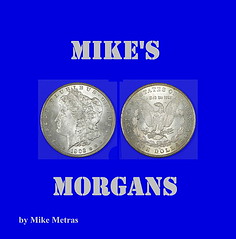 I have recently released my latest book, Mike’s Morgans, a coin by coin photographic record of my Morgan Dollar collection that I sold in
2012 and 2013.
I have recently released my latest book, Mike’s Morgans, a coin by coin photographic record of my Morgan Dollar collection that I sold in
2012 and 2013.
This is the full text of the Forward, It tells the story of the book:
I began collecting coins in 1955 when I was 12. Over the years I accumulated many. Now that I am older I am disbursing the coins. It is time to hold onto fewer things. It is time to turn the stewardship of the coins over to the next generation of collectors. I really enjoyed this Morgan Dollar collection. It was not full of rarities or many high-end examples. Rather it was an average collector's collection.
In 2012 and 2013, I sold my Morgan dollars on eBay. I ended up with many fine photos. The pictures were too nice to discard. I decided to make this book so I could continue to enjoy the collection. And you benefit from it because you, too, can enjoy the collection in book form. In the end, the 72 coins went to collectors in 27 states, Canada, Australia, and Malaysia. The listings include the location where I sent each coin. A dash anywhere in the data means I no longer have that data.
I acquired several of the coins in the sixties for face value before silver was taken from our coins. I would take my check down to the bank and cash it for silver dollars. I kept the ones I needed in my Whitman folders and spent the rest for face value. Over the years I upgraded some coins; but many remained the examples I got from the bank in the beginning.
I have included buy and sell prices here to illustrate that one can make money on a collection of common coins held over a long period—if one buys smartly and then sells the coins in the right market at the right time. I have no records of early purchases; so I use the date ‘60s and value $1 for the coins I bought in the ‘50s and ‘60s. I bought almost all at face value in those days. The great differences in buy/sell prices for those early coins are because I sold them when the silver was $30 to $40 and an ounce. The listed prices over $5 are rounded to the nearest dollar. All sell prices are net, after I paid eBay fees, fees which averaged 16 per cent.
The descriptions and conditions I give here are generally the same descriptions and conditions I advertised the coins for in eBay. I am not an expert in grading though I have graded many coins over the years. I could only give my estimations and let the buyers judge from the pictures, the same pictures that you see here in this book.
I also estimated VAM numbers for several coins. I am in no way an expert on VAM classifications. In fact, this was my first detailed look into VAM numbers. So treat them as the work of a rank amateur in a new field. I said the same on all sales listings.
Like most US coins, the Morgan Dollar was minted in coin orientation. That is, you flip it top to bottom to see the opposite side upright. Its specifications are
Size: 38.100 mm
Weight: 26.73 g.
Metal: Silver (0.900 fine)
ASW (actual silver weight): 0.7734 Troy ounces
Enjoy!
Mike Metras
November 2015
Mike’s Morgans is not a scholarly book. It a fun book celebrating my collection.
The particulars:
ISBN 9781329698154
Publisher Pilgrimage Creations
Published December 18, 2015
Language English
Pages 44
Binding Perfect-bound Paperback
Interior Ink Full color
Weight 0.54 lbs.
Dimensions (inches) 8.5 wide x 8.5 tall
It is available for $12.49 plus postage at LuLu.com and will soon be available at Amazon, Barns & Noble, and other popular sites. You can preview the book at this web address.
For more information, or to order, see:
Mike's Morgans
(http://www.lulu.com/shop/mike-metras/mikes-morgans/paperback/product-22447289.html)
THE BOOK BAZARRE
NEW BOOK: ISLAMIC HISTORY THROUGH COINS, REVISED EDITION
 I am very pleased to announce that the revised second edition of "Islamic History through Coins: An Analysis and Catalogue of
Tenth-Century Ikhshidid Coinage" (Revised Edition) is now available as an e-book but only as an e-book. It is a revised and expanded digital
edition of my investigation of what historians can learn through the study of coins focusing on the Ikhshidid dynasty. The following is from the AUC
Press announcement.
I am very pleased to announce that the revised second edition of "Islamic History through Coins: An Analysis and Catalogue of
Tenth-Century Ikhshidid Coinage" (Revised Edition) is now available as an e-book but only as an e-book. It is a revised and expanded digital
edition of my investigation of what historians can learn through the study of coins focusing on the Ikhshidid dynasty. The following is from the AUC
Press announcement.
As noted in a number of reviews, Islamic History through Coins has become the standard reference for Islamic coinage struck by the Ikhshidid rulers of Egypt and Palestine (935-69). The second edition not only corrects minor errors in the first edition but adds data on more than three hundred new specimens, including a half-dozen coin types not identified in the first edition. The new specimens include two examples struck with the mint name Mecca and a gold issue associated with the famous eunuch Kafur, two years before he became sole ruler of Egypt.
The delay in making this announcement was to ensure that the correct price for the e-book was available. It is $19.99 and can be ordered through the Amazon Kindle store, Barnes & Noble Nook store, Apple iBooks store, Google Play Books store, and Kobo, in the US, Canada, UK, Europe, and everywhere else these stores are available. If you are in the Middle East including Egypt, you might find that the price is significantly higher on some of these stores. In order to obtain the same price of $19.99, please consider buying the e-book directly from the AUC Press eBook store at: http://ebooks.aucpress.com.
For more information, or to purchase see:
Islamic History through Coins
(http://ebooks.aucpress.com/Books/9781617975202)
AMERICAN JOURNAL OF NUMISMATICS V25 BACK IN PRINT
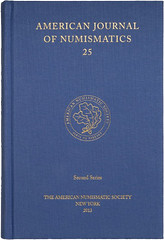 The American Journal of Numismatics (AJN) vol. 25 is now back in print and will be available to ship in March. This edition of AJN
was out-of-print almost immediately after it was published, and the ANS has partnered with Casemate Academic and Oxbow Books to take advantage of
their print-on-demand service. Pricing for this volume is $75 for non-Members and $52.50 for ANS members. Orders can be placed via Oxbow Books. If
you are an ANS member and would like to order AJN 25 at a discounted price, email Andrew Reinhard, ANS Director of Publications, for your special
code to use at checkout.
The American Journal of Numismatics (AJN) vol. 25 is now back in print and will be available to ship in March. This edition of AJN
was out-of-print almost immediately after it was published, and the ANS has partnered with Casemate Academic and Oxbow Books to take advantage of
their print-on-demand service. Pricing for this volume is $75 for non-Members and $52.50 for ANS members. Orders can be placed via Oxbow Books. If
you are an ANS member and would like to order AJN 25 at a discounted price, email Andrew Reinhard, ANS Director of Publications, for your special
code to use at checkout.
To order at Oxbow Books, see:
American Journal of Numismatics 25 [Hardback]
(www.oxbowbooks.com/dbbc/american-journal-of-numismatics-25.html)
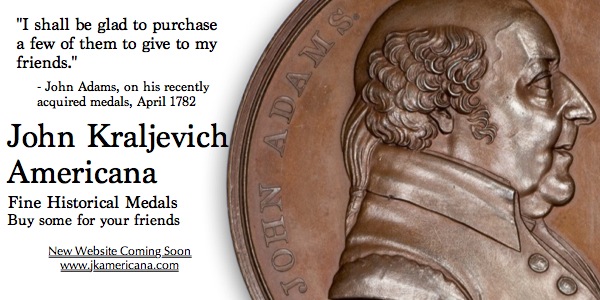
DELUXE HARDBOUND POGUE CATALOGS AND BOOKS
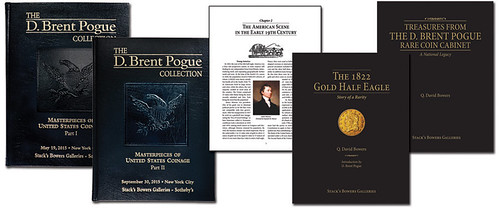
he D. Brent Pogue Collection, after just three sales, has become the most valuable numismatic collection ever sold. With total auction prices realized of $68,569,181 the Pogue Collection has now passed both the John J. Ford, Jr. Collection ($63,052,197) and the Eric P. Newman Collection ($61,880,912). In addition, individual coins in the collection have set price records as well. It is unlikely that there will ever be another collection to compare with this extraordinary cabinet. As part of our presentation of the D. Brent Pogue Collection, Stack’s Bowers Galleries is offering important, collectible volumes that will be essential parts of your numismatic library.
Deluxe Hardbound Pogue Collection Auction Catalogs:
You are invited to subscribe to one of the most important sets of books ever to be published in American numismatics: special deluxe
hardbound volumes of the D. Brent Pogue Collection: Masterpieces of United States Coinage. Each catalog will be offered, bound in dark navy
leather with gold foil enhancement and including a printed prices realized list. The catalog set features in-depth offerings of American
copper, silver, and gold coinage from the first year of the Philadelphia Mint’s operation, 1792, into the late 1830s, as well as some
additional rarities and specialized later series. Each volume contains highly readable text combined with much research information not
available from any other single source.
You can purchase each catalog for only $150 per issue plus $10 shipping. (Limit: one copy per buyer and subject to availability.)
However, we invite you to subscribe to the full suite of catalogs and receive a special 20% discount on each issue. You will be billed for each one as it becomes available. In this way you are assured of receiving each volume as it is published. As a special bonus, a custom box will be made to house the set and will be sent with our compliments.
Please call 800-458-4646 to place your order. You can look forward to some of the finest, most informative, and deluxe volumes ever published in the field of American numismatics.
Deluxe Hardbound Books about the Pogue Collection
In addition to the Pogue Collection catalogs, Q. David Bowers has written two interesting and informative companion books that are now
available from Stack’s Bowers Galleries.
Treasures from the D. Brent Pogue Rare Coin Cabinet, by Q. David Bowers. 208 pages, color illustrated, quality hardbound. This tells the stories of 100 special coins from the collection. $39.95 plus shipping. Personally autographed by Dave on request.
The 1822 Gold Half Eagle: Story of a Rarity, by Q. David Bowers. 128 pages, color illustrated, quality hardbound. $39.95 plus shipping. This also contains a wealth of information about other coins, people, places, and things—a “you are there” experience. Personally autographed by Dave on request.
To read the complete article, see:
Deluxe
Hardbound Pogue Catalogs and Books (www.stacksbowers.com/NewsMedia/Blogs/TabId/780/ArtMID/
2678/ArticleID/65594/Deluxe-Hardbound-Pogue-Catalogs-and-Books.aspx)
BOOK REVIEW: 100 GREATEST WOMEN ON COINS
 This hardcover “Coffee-table size” reference has 128 pages and features 100 of the greatest women. Author Ron Guth did a masterful job of
researching all of the women which have appeared on coins. Ron even took an online course at the American Public University on “The History of
American Women” to help his search. Each woman has a page with a full color picture of her along with an enlarged picture of the coin she is
portrayed on. The Foreword by Women in Numismatics President Charmy Harker, also known as “The Penny Lady,” says, “It is quite evident that Ron Guth
has done an extensive amount of meticulous research into the history of women who have appeared on coins, and he describes these great women in such
a way that makes it easy to understand what made them so special as to be honored with their image carved into a coin.” The reference “is a
fascinating look into the important role women have played throughout numismatic history and throughout history in general.”
This hardcover “Coffee-table size” reference has 128 pages and features 100 of the greatest women. Author Ron Guth did a masterful job of
researching all of the women which have appeared on coins. Ron even took an online course at the American Public University on “The History of
American Women” to help his search. Each woman has a page with a full color picture of her along with an enlarged picture of the coin she is
portrayed on. The Foreword by Women in Numismatics President Charmy Harker, also known as “The Penny Lady,” says, “It is quite evident that Ron Guth
has done an extensive amount of meticulous research into the history of women who have appeared on coins, and he describes these great women in such
a way that makes it easy to understand what made them so special as to be honored with their image carved into a coin.” The reference “is a
fascinating look into the important role women have played throughout numismatic history and throughout history in general.”
The author was inspired to do this reference because of a lady named Alice Paul who is Number 79 in the book. She burst onto the scene in 2012 when she appeared on the First Spouse gold coin issued in conjunction with President Chester Arthur’s Presidential Dollar. He was a widower during his Presidency. Ms Paul was three years old when President Arthur passed away, and the book explains nicely how this feminist came to have her portrait on this coin. Besides Ms Paul, the author says, “This book is a celebration of the hundreds of women who have appeared on coins from ancient times to present.”
“The Methodology of selecting the 100 Greatest Women,” is the nuts and bolts of the project along with the research and resources used to select the top 100 women. He used www.wildwinds.com and the Krause publication Standard Catalog of World Coins along with other sources to come up with the 600 women who appeared on coins. This list is found in the back of the book. The task of picking the top 100 was accomplished through members of Women in Numismatics (140 members with 19 assisting Ron – which included two male members). The author used four distinct categories to select the women: 1. Real Women. 2. Goddesses. 3. Allegorical Women. 4. Women in Art.
“How Do Women Get on Coins?” From the time of Lydia, the author explains how through time women came to appear on coins. The book is laid out with the first ten women having two pages for each and larger narratives than the last 90 women which have only one page each. With some of the top 100 having a huge database of information some had very little, thus narratives could be longer or shorter than allotted space. The author’s research found some interesting information, on many of the women.
When Grace Kelly married Prince Rainier, he asked for and received a two million dollar dowry and Princess Diana had an eating disorder. These are just two of the many fascinating things that you will find out about the 100 greatest women on coins. “Collecting Difficulty,” gives you the information needed if you want to collect an example of each of the coins. The author set three levels of difficulty with: 1. Easy. 2. Moderately Difficult. 3. Difficult. The coins in the top 100 are composed of gold, silver and common pocket change examples with different metal compositions and unusual commemoratives. Some are super rare, but most are easy to obtain at little cost, and some can even be found in circulation.
“Collecting Women on Coins,” Ron Guth suggests: 1. Collect all the coins of one woman. 2. Collect a theme. 3. Collect a category. 4. Collect all of them (one from each). 5. You probably could come up with many other ways to collect women on coins. “How to Obtain Women on Coins,” gives the reader some ideas on where they can be obtained such as auctions, Ebay, coin shops, numismatic publications, mail order, mints in the world, and coin shows. We would also add coin club meetings. “Pricing,” finishes out the important Introduction. The author explains his thoughts on how he derived on the collecting difficulty for each of the top hundred listed in the reference. The authors email and address are listed for anyone who wants to add anything to the reference or make corrections.
The first woman is Mary, Mother of Jesus. We can easily see why Mary, the Mother of Jesus, was voted number one; it is an easy coin to obtain with many different coins available. Second is Helen Keller who overcame blindness and deafness to become the most inspirational person in American history. She is portrayed on the Alabama 2003 quarter. The third woman is Mother Teresa (1910 – 1997) who appears on the French 2010 10 Euro coin. She dedicated most of her life in service to the poor in Calcutta, India. In 1979 she received the Nobel Peace Prize, and the $190,000 prize money went to the poor. Pope Francis has given final clearance for Mother Teresa – who will soon be called “The Saint of the Gutters,” to receive this high tribute.
The fourth woman is Queen Cleopatra (or Cleopatra Vll Philopator). She was considered the most beautiful woman in the ancient world. This Queen of Egypt turned the heads of anyone who crossed her path. One Emperor gave up his kingdom for her. Cleopatra was married to Julius Caesar, Marc Anthony, members of her own family and others. She had a great fondness for poisons using these drugs to kill her brother, husband and others. She committed suicide by allowing an Egyptian cobra to bite her. The author says collecting coins of Cleopatra Vll is easy and coins from ancient times portraying her can be purchased for $200 to $800. He cautions you to beware of counterfeits. You will find the name Cleopatra several other times in the top 100.
Princess Diana is number 6, and her coins are easy to collect. We think everyone in the world admired this famous lady, who unfortunately died in a car accident along with her boyfriend Dodi Fayed in 1997. Along with coins, you will find her image on postage stamps. Florence Nightingale (1820 – 1910) was the founder of the modern nursing profession. Her coins are easy to obtain. Another interesting selection was Queen Marie Antoinette at Number 40. She reigned, along with her husband King Louis VVl, from 1774 until their executions in 1792. Number 42 is Medusa who in the Greek version began life as a monstrous Gorgon. The Roman version had her as a beautiful woman.
Number 65 has Golda Meir (1898 – 1978) who served as Israel’s first female prime minister from 1969 - 1974. She was a great leader who achieved many things for her country. She is an easy coin to collect, and the author says, “a nice mini-collection can be made of the numerous Golda Meir coins and medals.” Number 93 is Marilyn Monroe (1926 – 1962). This movie star was a sex symbol who appeared in the first issue of Playboy magazine in 1953, and an “American icon and a tragic, misunderstood figure. She first married at 16 and in four years was divorced. Her second marriage was to baseball legend Joe DiMaggio. This marriage lasted four months. In 1956 she married Playwright Arthur Miller and divorced him in 1961. She overdosed from barbiturates in 1962.
The acknowledgments, contributors, author’s biography and other books written by Mr. Guth are listed. The Appendix contains three pages of other coins portraying females from the four categories mentioned at the beginning of this review. An application for Women In Numismatics (WIN) will also be found here, along with their web page: www.womeninnumismatics.com .
It is amazing that the majority of the top 100 coins are available at little cost. This is a much needed reference covering a subject that just might get your significant other collecting “Women on Coins.” Through hard work, dedication, difficult research, and assistance by Women In Numismatics and others, Ron Guth has hit a Grand Slam with 100 Greatest Women On Coins. We recommend this reference to dealers, collectors as well as non-collectors. This reference is available for $29.95 from the publisher: Whitman Publishing LLC, 3101 Clairmont Rd., Suite G., Atlanta, GA. 30329, Phone Number (800) 546-2995 or www.whitmanbooks.com.
To read the earlier E-Sylum articles, see:
NEW BOOK: 100 GREATEST WOMEN ON COINS
(www.coinbooks.org/esylum_v18n26a05.html)
BOOK REVIEW: 100 GREATEST WOMEN ON COINS
(www.coinbooks.org/esylum_v18n36a07.html)
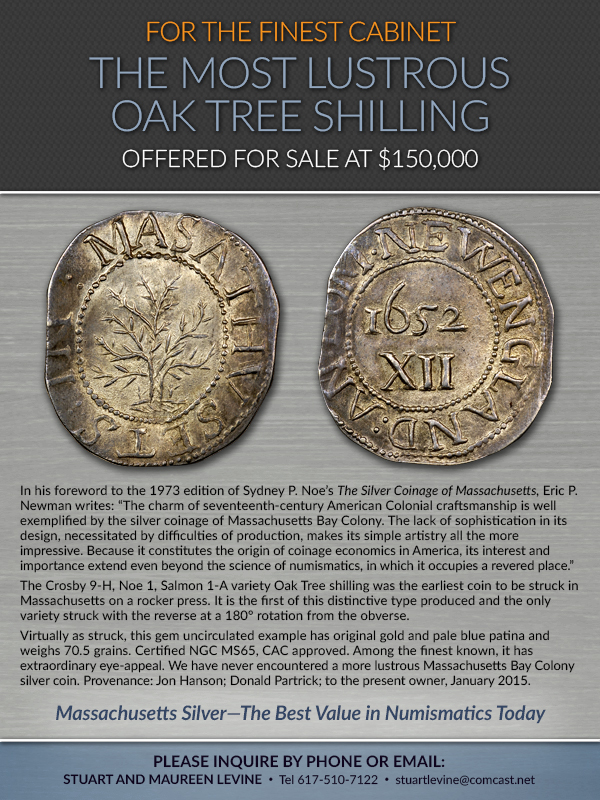
THE EVOLUTION OF MEDAL COLLECTING, BY JOHN SALLAY
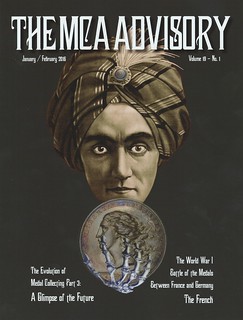 Recently published in The MCA Advisory, the journal of the Medal Collectors of America (MCA), John Sallay’s three-part survey of the
digital landscape for medal collectors is an insightful summary of the quickly changing Internet and its relation to numismatists of all stripes.
Although primarily geared toward medal collectors, this series is equally applicable to other numismatic disciplines and a must-read for any
numismatist involved in Internet content creation. Sallay develops a useful model to categorize collector interaction with the Internet, explaining
the use cases of transaction, social, and information. This model is applied to today’s major numismatic websites, and the last article in the series
offers thoughtful predictions regarding our shared digital future.
Recently published in The MCA Advisory, the journal of the Medal Collectors of America (MCA), John Sallay’s three-part survey of the
digital landscape for medal collectors is an insightful summary of the quickly changing Internet and its relation to numismatists of all stripes.
Although primarily geared toward medal collectors, this series is equally applicable to other numismatic disciplines and a must-read for any
numismatist involved in Internet content creation. Sallay develops a useful model to categorize collector interaction with the Internet, explaining
the use cases of transaction, social, and information. This model is applied to today’s major numismatic websites, and the last article in the series
offers thoughtful predictions regarding our shared digital future.
The MCA has graciously opened this three-part series to all, which may be viewed in the Newman Portal collection on Internet Archive. The MCA publishes six issues of the Advisory per year, featuring exceptionally high standards of editorial and graphical sophistication. Recent authors include John Adams, John Kraljevich, David Alexander, Bob Julian, Dick Johnson, and other equally recognizable names.
Medal collecting is an exciting area of numismatics, unexplored enough to offer many discoveries, with a wide array of historically important pieces available to collectors at reasonable price points. Indeed, the first article in Sallay’s series discusses hidden treasure on ebay, a venue that has significantly impacted medal collecting, and all numismatics, since its inception. The MCA maintains a presence at major numismatic events including the summer ANA convention and New York International show in January. New members may apply via a membership application on the MCA home page.
The Evolution of Medal Collecting, part 1: Ebay (The MCA Advisory, vol. 18, no. 5, September/October 2015, pp. 19-23)
The Evolution of Medal Collecting, part 2: Beyond Ebay (The MCA Advisory, vol. 18, no. 6, November/December 2015, pp. 14-24)
The Evolution of Medal Collecting, part 3: A Glimpse of the Future? ( The MCA Advisory, vol. 19, no. 1, January/February 2016, pp. 16-24)
To read The Evolution of Medal Collecting on Internet Archive, see:
The Evolution Of Medal Collecting
(https://archive.org/details/EvolutionOfMedalCollectingByJohnSallay)
For more information about the Medal Collectors of America, see:
www.medalcollectors.org
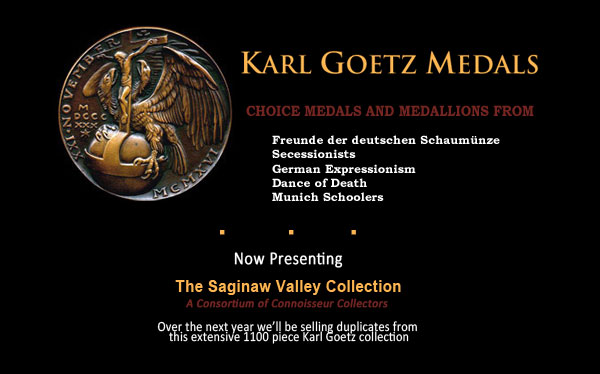
NEWMAN PORTAL SCANS MEHL’S NUMISMATIC MONTHLY
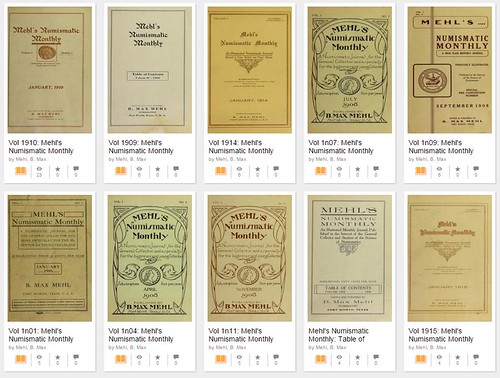
B. Max Mehl, one of the more colorful coin dealers in American history, published his Numismatic Monthly house organ from 1908-1919. The Monthly reads quite similar to The Numismatist for the same period, featuring numismatic society updates, letters to the editor, advertisements for coins and books, and tidbits extracted from local newspapers.
The March 1910 issue, for example, reprints a diatribe from the Washington Post. Irritated that the Mint continued to strike military medals from original dies, the article asks “What’s the use of having had an ancestor who scrapped alongside John Paul Jones and got a bronze medal for his work, if every gazebo with a dollar and a half in his clothes can now slip in and get the identical piece of bronze with the official guarantee of its genuineness from the United States Treasury Department?” (Reflective of most contemporary collectors, the writer was unfamiliar with distinguishing die characteristics of such pieces.)
Feature articles are interspersed, with the April 1910 issue presenting an overview of Vermont coinage and a note on the 1861-O Confederate half dollar. Mehl, who advertised widely in the mass media, was attracted to cartooning and occasionally used this creative form. This influence is seen in the October 1919 issue, where Mehl reprinted a cartoon, “The Present Droll Situation in Foreign Exchange,” from the New York Mail. [image attached] The Newman Portal acknowledges Joel Orosz for loaning his set of the Monthly for scanning.
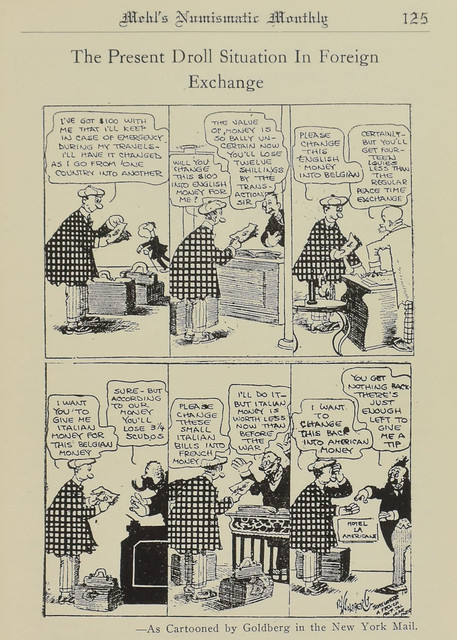
To read Mehl’s Numismatic Monthly on Internet Archive, see:
Mehl’s Numismatic Monthly
(https://archive.org/details/newmannumismatic?and%5b%5d=mehl%20monthly)
CAN YOU READ FRANKLIN PEALE’S HANDWRITING?

 In 1833, future Chief Coiner Franklin Peale undertook a two-year tour of the European mints. Upon his return, he wrote one of the most
important reports in U.S. Mint history, which formed the basis for technological improvements during his tenure. The Newman Numismatic Portal has
placed a copy of Franklin Peale’s handwritten manuscript on Internet Archive and is now creating a transcription that will be publicly available upon
completion.
In 1833, future Chief Coiner Franklin Peale undertook a two-year tour of the European mints. Upon his return, he wrote one of the most
important reports in U.S. Mint history, which formed the basis for technological improvements during his tenure. The Newman Numismatic Portal has
placed a copy of Franklin Peale’s handwritten manuscript on Internet Archive and is now creating a transcription that will be publicly available upon
completion.
We have divided the transcription work into individual pages and invite interested volunteers to take on one page, two pages, or even more. If you wish to volunteer, please email Newman Portal Project Coordinator Len Augsburger at leonard.augsburger@wustl.edu. The Newman Portal acknowledges Dick Johnson for furnishing a partial transcript to initiate this effort, and Bob Julian for a photocopy of the document.
To view Franklin Peale’s report on Internet Archive, see:
Report of Franklin Peale's Visit to European Mints, 1835
(https://archive.org/details/pealereport1835peal)
THE BOOK BAZARRE
JOHNSON “JOHN” GIDEON BINGHAM (1845-1926)

Johnson “John” Gideon Bingham (1845-1926), A farmer, town supervisor, and coin dealer who lived at Solon, with a mailing address of McGraw (McGrawville), Cortland County, New York. He was born on June 21, 1845, the son of farmers, Samuel (1806-1891) and Sally Randall Bingham (1808-1890). His family is directly descended from Judge Johnson Bingham (1764-1843), a Revolutionary War soldier who lived in Shaftsbury, Vermont.
The nostalgia of his colonial family together with other various heirlooms he inherited stimulated Bingham to become a collector and dealer in coins and other antiquities.
On November 21, 1872, he married Mariah W. Kinney (1851-1928) and they had a daughter, Maud Charlotte (1876-1968).
He was a collector and dealer of U. S. and ancient coins and colonial, confederate and fractional currency, and curiosities as well as a numismatic writer. He took a trip with wife and family to California in November 1884 and a notice of this was published by Ebenezer Locke Mason, Jr. in Mason's Coin and Stamp Collectors' Magazine.
He died April 28, 1926.
To read the complete article, see:
BINGHAM, JOHN
GIDEON (https://sites.google.com/site/numismaticmallcom/encyclopedic-dictionary-of-numismatic-biographies/bingham-john-g)
TRAVELS THROUGH NORTH AMERICA 1825-1826
Kolbe and Fanning Numismatic Booksellers recently sent out a catalog of Select Numismatic Books For Sale at Fixed Prices (February 2016). The heading for Lot 5 immediately caught my eye, “ Rare English Translation of a German Duke’s American Travels, Including Visit to Mint" / Notes that No Silver Dollars Had Been Minted since 1803. The book was titled,
Bernhard, Duke Karl. TRAVELS THROUGH NORTH AMERICA, DURING THE YEARS 1825 AND 1826. BY HIS HIGHNESS, BERNHARD, DUKE OF SAXE-WEIMAR EISENACH. Philadelphia: Carey, Lea & Carey, 1828.
This offering was cataloged extensively, including the following excerpt which will be of interest to many of us who study the early U.S. Mint and coinage:
I saw also, in company with Messrs. Vaux and Niederstetter, the mine of the United States, which is established here. In the year 1793, when Philadelphia was still the seat of government of the United States, this mint was located in the newly-built private house, and it is as yet the only one in the United States. The processes in this mint are very simple, and but a few improvements are yet adapted, which so greatly distinguish the mints of London and Milan. They were doing but little when we came; we saw nothing but the stretching of the bars of silver between cylinders, like those in the rolling mills at Pittsburgh, and the stamping of the pieces, which was done by means of a contrivance similar to that by which rivet-holes are made in the iron plates for steam-engine boilers. We saw, moreover, the cutting of half dollar pieces, which is done by means of a stamp, worked by two men. A third stands by to place the uncoined pieces in a box, which are then brought under the stamp by a particular contrivance. After they are coined, they fall by means of this contrivance into a box which stands below. Since 1803, no larger silver coins are made than half dollars, as the dollars were immediately bought up and exported to China for trade, because the….
This sure makes me want to “turn to the next page!” Discovering information like this to me is like being a fly on the wall, this time in 1825 or 1826. And now we know where some of the bag marks come from on 1825 and 1826 half dollars, and possibly the first toning on some of these coins.
By the way, the book is beautifully bound.
Kolbe and Fanning can be contacted at df@numislit.com and their website is www.numislit.com.
For more information on the John Reich Collectors Society, see:
www.jrcs.org

E-SYLUM ARTICLE SEQUENCE NUMBERS
While it would be difficult to improve on The E-Sylum, I do have a suggestion.
My first thought would be to number each article each week in your table of contents instead of the bullet points. This would aid finding it when a reference is made to it later.
Then I realized you have all existing articles sequentially numbered in the Complete Table of Contents. Could you assign this sequence number in each issue as published? This could appear instead of – or in addition to – the bullet point for each article. This would aid searching for a previous article as I do constantly.
Then citations would be for example: 13942, Oct 2014 instead of the unwieldy Volume Number, Issue Number, Article Number. Including the date is important, as it gives meaning to when it was published (absent in the present system).
There is precedence for this. Index 19th Century American Art Periodicals by Mary Martin Schmidt, where every article is so serially numbered.
I do a lot of referring back to previous E-Sylum articles. This method would be far more convenient.

The first column is the article sequence number. The last article in our last issue (Volume 19, Number 8, Article 38) is consecutive article number 20,474.
I suppose we could experiment with article numbers rather than bullets in the table of contents packages with the weekly email, but I don’t think that would look as nice. Since the numbers are available on the archive I’m not inclined to include them in the emailed issue as well. -Editor
WANTED: RESEARCH ON HALF DIME TOKENS
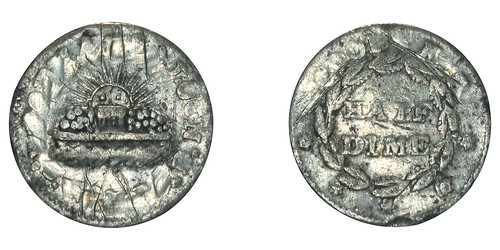
Bob Merchant writes:
I have seen several U.S. "Half Dime" tokens for sale over the years. They are usually in beat-up condition, and they appear to be made of mixed metal. The subject of "Half Dime" tokens is a book (or article) that has not yet been written. So who is going to research and write it? Whoever takes the challenge should start with last edition of the Rulau token book, which lists several different types.
To read the earlier E-Sylum article, see:
NOTES FROM E-SYLUM READERS: FEBRUARY 21, 2016 : More on the Unknown Half Dime
Token (www.coinbooks.org/esylum_v19n08a12.html)
MORE ON THE WRONG-WAY BUFFALO NICKEL
Regarding the "Wrong-Way Buffalo" nickel referenced in the Andy Griffith Show article last week, John Frost writes:
Of course, such a coin could exist - a full brockage would have the buffalo pointed the wrong way. A planchet whose front side is struck by the back of another coin adhered to the obverse die (die cap). Of course, the wrong-way buffalo would also be incuse! I wonder if such a coin exists out there in Errorland?
I asked E-Sylum sponsor and error coin expert Fred Weinberg, who writes:
Although I know of just a very few partial brockage Buffalo Nickels, I’m not aware of any full brockage mirror-image brockage reverse Buffalo’s.
This series was one that had the upper or hammer die was the reverse die, and the bottom or anvil die was the obverse die.
 I believe that Andy was referring to a ‘backwards’ Buffalo as an error, but without any knowledge of a brockage error coin - probably
something a writer wrote for the scrip, like the “Inverted Jenny” stamp, or, maybe he picked the Buffalo Nickel because of the popularity of the
Three-Legged variety, and this was his different spin on it, making up a new error on the coin.
I believe that Andy was referring to a ‘backwards’ Buffalo as an error, but without any knowledge of a brockage error coin - probably
something a writer wrote for the scrip, like the “Inverted Jenny” stamp, or, maybe he picked the Buffalo Nickel because of the popularity of the
Three-Legged variety, and this was his different spin on it, making up a new error on the coin.
He could have said something like “It’s a Silver Dollar with the Eagle on the back looking the other direction”, etc.
That’s my take on the conversation in the show…….
To read the earlier E-Sylum article, see:
WRONG-WAY BUFFALO NICKEL IN ANDY GRIFFITH EPISODE
(www.coinbooks.org/esylum_v19n08a33.html)
THE BOOK BAZARRE
NOTES FROM E-SYLUM READERS: FEBRUARY 28, 2016
Some Notes from Dave Hirt
Dave Hirt writes:
Here are some comments on last week's E-Sylum.
On Charles Enders, I have in my library a Ender's Price List and Catalog of Rare Electrotypes, Coins and Medals Four pages, undated, but probably the 1880s. I have owned this for many years.
On the paper money turned in to the Treasury by the Green estate, I agree 100% with your comments. From what I have read of Hetty Green, any paper money she had would be put to work, either as an investment, or at least earning interest. Surely those notes wire purchased by her son Ned.
On the post on J L Riddell, I have the book Long Ride in Texas, which as was mentioned, has interesting biographical information on Riddell.
To read the earlier E-Sylum articles, see:
CHARLES ENDERS, JR. (www.coinbooks.org/esylum_v19n08a13.html)
DID COL. GREEN ESTATE BURN RARE BANKNOTES WORTH $1M?
(www.coinbooks.org/esylum_v19n08a14.html)
J.L. RIDDELL'S MICROSCOPE (www.coinbooks.org/esylum_v19n08a22.html)
Replica Banknotes on eBay
Don Cleveland writes:
eBay will not permit the sale of the banknotes of Cuba, North Korea, and one or two other countries on their web site, but will permit the sale of unmarked replicas of circulating and/or legal-tender banknotes of most countries in contravention of U.S. and international laws. How come they permit this to continue? The sale of these replicas poses a much greater risk of harm than the occasional sale of a few Cuban banknotes among collectors.
To read the earlier E-Sylum article, see:
THE FORBIDDEN BANKNOTES OF CUBA (www.coinbooks.org/esylum_v19n08a34.html)
More on the Destruction of Col. Green's Banknotes
Dave Bowers writes:
There is more to the destruction of the Green paper money than burning duplicates. In the 1950s I did some investigation and was told that a large number of notes were housed in cellulose acetate holders and had crumbled to pieces. The Treasury routinely redeemed damaged notes, and these notes were identified and face value paid.
Roger Burdette writes:
Yes, some of the Green notes were damaged by the nitrate holders. Others that Newman bought were ruined by the holders. I've never seen a list of the lost.
To read the earlier E-Sylum article, see:
DID COL. GREEN ESTATE BURN RARE BANKNOTES WORTH $1M?
(www.coinbooks.org/esylum_v19n08a14.html)
Reader Thoughts on Large Denomination Banknotes
Bruce Smith writes:
Regarding the debate to kill the $100 bill -- I remember reading about this same plan, for the same reason (organized crime), in the 1960's. As currency collectors know, the U.S. used to have in ordinary circulation notes in denominations of $500 $1000 $5000 and $10,00. They stopped making them in the 1940's and began withdrawing them from circulation in the 1960's.
I have never heard any explanation why this was done. Was it to make organized crime more difficult? I remember there was a congressional investigation into organized crime in the late 1950's or early 1960's, which was televised. J. Edgar Hoover told Congress on camera and under oath that there was no such thing as the mafia -- even though he had been secretly making deals with them since he first took over the FBI. Why were these high denomination bills being eliminated as early as the 1940's and withdrawn in the 1960's?
Tony Terranova writes:
That idea that our 100 dollar bill leads toward corruption is ridiculous. A 500 euro note is the same as a 500 dollar note, we stopped printing those over 50 years ago.
To read the earlier E-Sylum article, see:
SUMMERS AGAINST HIGH-DENOMINATION BANKNOTES
(www.coinbooks.org/esylum_v19n08a32.html)
Bookbinder Recommendation: Sam Ellenport
Joe Foster writes:
I would highly recommend Sam Ellenport of Belmont, Mass. He does only leather bindings and restorations and has done several for me. I went to Sam when Maureen Grace went to England and did not return; of course, Alan Grace did all of my bindings for years until his tragic death. Sam's email is sam@chagfordinc.com.
To read the earlier E-Sylum article, see:
NOTES FROM E-SYLUM READERS: FEBRUARY 21, 2016 : Bookbinder Recommendations
(www.coinbooks.org/esylum_v19n08a12.html)
2016 IOWMC Wooden Nickels Available
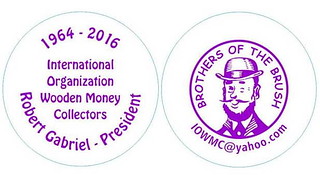
Bob Gabriel passed along this announcement from the International Order of Wooden Money Collectors (IOWMC). Thanks.
President Robert Gabriel has made some 2016 IOWMC woods bringing back the “Brothers of the Brush” design. The woods are 1½” diameter ink printed. The Brothers of the Brush was popular years back. They are free to club members who send either a small donation for the club and/or postage of $2.50 to cover the shipping of a handful in a 000 bubble mailer. Great to keep a couple and pass out a few to promote IOWMC. The wood showcases our new email address IOWMC@yahoo.com. Please send inquires to Bob Gabriel – 28 Hatch Street – Nashua, NH 03060-5856.
John Leonard Riddell's Science Fiction
Mike Marotta writes:
E-Sylum readers who want to read John Leonard Riddell's science fiction yarn, "Orrin Lindsay's plan of aerial navigation," can find it online at Google Books. Interestingly, that edition may be an unauthorized "bootleg." Google Books scanned theirs from the University of Michigan Library. That edition was printed by John C. Noble's Book and Job Printing Office, Louisville, in 1847. However, Riddell himself arranged for the printing with Rea's Power Press Office of New Orleans, the city where he lived and worked.
Another version can be found at Forgotten Futures, a project website of Marcus L. Rowland. Find that at http://www.forgottenfutures.co.uk/lindsay/moon.htm. Roland re-set the work for HTML presentation. He says that he proofread his against another version from the July 2009 issue of "Science Fiction Studies" (Vol. 36, No. 108, Part 2). SFS is at DePauw University (http://www.depauw.edu/sfs/). They sell back issues for $20. (Nothing goes online until the hardcopies are sold out.)
Also, antiquarian Lloyd W. Currey has an original New Orleans edition for sale for $3750.
To read Mike's earlier E-Sylum article, see:
J.L. RIDDELL'S MICROSCOPE (www.coinbooks.org/esylum_v19n08a22.html)
A Crapload of Politics
Tom DeLorey writes:
If I might offer a metric definition of the highly useful term "crapload," let it be one one-trillionth of all the political commercials run in America between 12:01 A.M. on Jan. 1, 2015 and 11:59 P.M. on Nov. 8, 2016.
To read the earlier E-Sylum article, see:
NOTES FROM E-SYLUM READERS: FEBRUARY 21, 2016 : Definition: Crapload
(www.coinbooks.org/esylum_v19n08a12.html)
THE BOOK BAZARRE
I need a copy of this Bonneville work. I have the earlier edition but need the 1882 edition to check a few items. The book is very scarce although there is little demand for it so hard to say what the price should be. If anyone has a copy please offer it to me. If you don’t want to sell I would ask the favor of having the few pages devoted to Ecuador photocopied for me. I would pay quite liberally for these photocopies. Dale Seppa (hpd1940@aim.com) 103 N 6th Avenue, Virginia, MN 55792
POGUE COLLECTION SALE PART IV ANNOUNCED
On May 25, 2016, in cooperation with Sotheby’s at Sotheby’s International Headquarters in New York City, Stack’s Bowers Galleries will offer not only the finest known 1804 silver dollar, but also the rare and legendary 1822 half eagle. Although both were once included in the famous Virgil M. Brand Collection, never before in auction history have these two rarities appeared at auction together. And, these two masterpieces will be accompanied by a similarly unparalleled group of some of the finest and rarest coins produced in the United States in the first part of the 19th century.
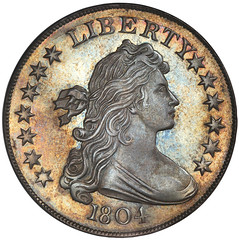

The Sultan of Muscat-Childs-Pogue 1804 silver dollar has been graded Proof-68 by PCGS, and is the single finest example of what has long been regarded as the King of American coins. Its provenance begins with its 1835 delivery as a diplomatic gift from the United States of America to Said bin Sultan Al-Said, the Sultan of Muscat and Oman. Since appearing in a London auction in 1917, the 1804 dollar given to the Sultan of Muscat has sold at auction only once, in 1999 when the Pogue family acquired it. At that time, it set a world record price for any coin ever sold at auction, an honor it held until Sotheby’s and Stack’s reset the record when they sold the 1933 double eagle. The Pogue 1804 silver dollar remains one of the five most valuable coins in the world.
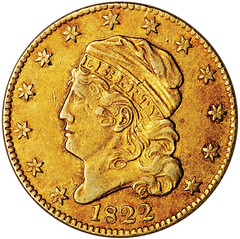
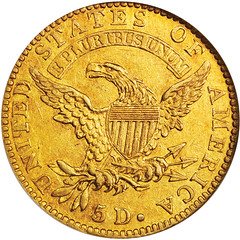
The 1822 half eagle is a coin that has been simply unobtainable since the Pogue family purchased this example from the Eliasberg Collection in October 1982. Although there are two other examples, both are owned by the United States government and are part of the National Coin Collection at the Smithsonian Institution. The appearance of the Brand-Eliasberg-Pogue example on May 25 will mark only the second time in over a century that collectors have had the chance to compete at auction for this magnificent rarity.

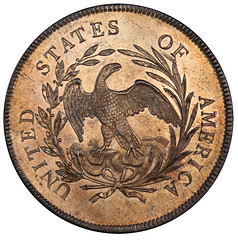
Joining these rarities is a host of other extraordinary half dollars, silver dollars, and half eagles. First among these is an 1838-O Specimen half dollar, without doubt the rarest and most famous product of the New Orleans Mint. The Garrett “Proof” 1795 Draped Bust, Small Eagle dollar is legendary among numismatic experts as the only Specimen striking of the entire type. Graded SP-66 by PCGS, the Garrett dollar was described as Proof in the 1980 Garrett II sale, and it has been discussed in hushed tones of awe ever since. Once the property of 19th century Philadelphia numismatist J. Colvin Randall, the Garrett 1795 Draped Bust dollar sat in the same cabinet as the remarkable John Jay Pittman 1833 half eagle, graded Proof-67 (PCGS). These two coins were reunited in the D. Brent Pogue Collection in 1997. On May 25, they will be sold on the same night.
The Pogue IV sale includes Reeded Edge half dollars from 1836 to 1839-O, Draped Bust, Small Eagle silver dollars from 1795 to 1798 plus, as noted, the finest known Class I 1804 silver dollar, Gobrecht silver dollars of 1836 through 1839, half eagles from 1821 to 1839-D, and a single eagle dated 1838 (the first coinage of that denomination since 1804).
The eyes of the world will be focused on this sale—an event the likes of which has never happened before and will never happen again. You are invited to learn more, bid, and possibly buy, or participate as an interested observer while history is being made. For more information about the D. Brent Pogue Collection Part IV auction, visit www.StacksBowers.com .
NATIONAL NUMISMATIC COLLECTION PHOTOS SOUGHT
With Jeff Garrett I am writing the history of the National Numismatic Collection. This will include the Mint Cabinet and other aspects from 1838 down to the latest Value of Money exhibit.
If any readers have sharp color pictures of any of these subjects to share I would be grateful for the opportunity to borrow them:
1. Coin collection on display at the Smithsonian prior to 1953
2. Exhibits and panels of coins at the SI from the 1950s to the 1980s
3. Eliasberg Collection on display at the Philadelphia Mint in 1976
4. Pictures of modern exhibits by the SI at the summer ANA conventions
5. Pictures of the Chase Manhattan Money Museum
Whitman Publishing LLC will be making announcements this summer about the availability of the book. It will include an inventory of the American coins from the colonial era on onward as studied by Jeff Garrett. I will be doing the narrative history.
All good wishes, and with thanks.
Dave Bowers
qdbarchive@metrocast.net

ANALYSIS CONFIRMS TWO COPPER 1792 PATTERN CENTS
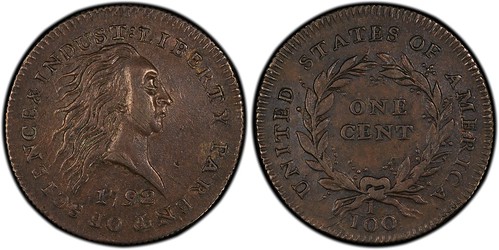
The Weinberg 1792 J-2 Cent
Professional Coin Grading Service (www.PCGS.com) recently had the unique opportunity to perform metallurgical testing on two different examples of the extremely rare 1792 Pattern Cent. Both were shown to have been made of essentially pure copper instead of a “fusible alloy” containing copper and a small portion of silver.
“The results give a clearer picture of how the U.S. Mint experimented on the earliest American coins in preparation for official coining in 1793. At least three of the nine known 1792 Cents originally designated as the Judd-2 variety now are confirmed to be composed of virtually pure copper,” said Ron Guth, President of PCGS CoinFacts (www.PCGSCoinFacts.com), the Internet’s most comprehensive source for information about United States coins.
“This represents a major step forward in our understanding of early American numismatics, plus it was the first time these two rarities have been together in 224 years. Working with the owners of the two 1792 cents, PCGS arranged for an in-house, non-invasive metallurgical analysis of their coins,” explained Guth.
One of the recently tested Judd-2 cents has been owned by collector Alan Weinberg of California since 1988 when he purchased it at a Bowers and Merena auction. Its pedigree includes the Lorin G. Parmelee, Virgil Brand and Norweb collections. Although uncertified, PCGS estimates its grade as EF45, making it the second finest known.
The other recently tested coin, graded PCGS VF35, was unknown until 2004 when the Wolcott family from southwestern New York State brought their inherited coin to the American Numismatic Association World’s Fair of Money in Pittsburgh, Pennsylvania. It was certified by PCGS and its discovery generated nationwide headlines. Owners since then have included Anthony Terranova, Denis Loring, Legend Numismatics and Bob R. Simpson. The coin now is owned by a collector who wishes to remain anonymous after purchasing it through Heritage Auctions this past January.
A third Judd-2 1792 cent, confirmed to be pure copper, is in the American Numismatic Association Edward C. Rochette Money Museum collection, and graded Good.
Early United States Mint engraver Henry Voight, who also created the 1793 Chain and Wreath cent varieties, designed the Judd-2 variety.
Judd refers to the book, United States Pattern, Experimental and Trial Pieces, a reference guide authored by Dr. J. Hewitt Judd. Coins listed in the book are classified by Judd numbers, including J-2, the current designation for 1792-dated cents made of pure copper.
“1792 saw a flurry of activity aimed at establishing a mint in the United States. Congress passed a Mint Act, a Director was chosen, a parcel of land was purchased, a building was erected in Philadelphia and employees were hired,” explained Guth.
“Several one-cent denomination coins were tested that year: a large copper piece known today as the Birch Cent (Judd-4); a smaller copper piece with a silver center (Judd-1); a piece of similar size in pure copper (Judd-2); and a piece of similar size with the copper and the silver center cent melted together into what is known as a ‘fusible alloy’ (Judd did not create a separate listing for such a coin).”
“Mint records point to their experiment with fusible alloy cents, but none have been confirmed to date (one example tested years ago showed a small fraction of silver, but the margin of error of the test precluded a positive determination).” The search for a real Fusible Alloy cent continues. “Hopefully,” concluded Guth, “testing of the remaining 1792 cents will reveal the true nature of these remarkable coins.”
THE RESURRECTION OF THE FIRST COLUMBIAN HALF DOLLAR

Take a chance meeting, an incomplete library index card, and a tattered newspaper, and you have the keys to unlock one of the numismatic mysteries of the decade.
One day early in March of this year, a man came to me at my work in Chicago and asked if there were any coin shows in the area in the immediate future. I told him that the next show of import in the area was the P.N.G. show to be held in October. Then I became curious and said, “Why do you ask?”
He said, “First, I should identify myself,” and he handed me a card reading: “E. Leland Webber, Director, Field Museum of Natural History.” Immediately I was interested!
“We found something at the Museum that might be of interest to collectors, and we would like to have it exhibited at a show.”
“Oh? What's that?” I asked.
“The first Columbian Half Dollar!” was his reply.
Needless to say, this was a surprise and I became even more interested. I asked him just what it would take to have it placed on exhibit at the P.N.G. Show in the Fall.
He replied, “Well, mainly three things. First, that it has adequate protection while outside the Museum. Second, that the Museum get adequate recognition in the publicity concerning the exhibit. And the third is probably the most unusual and the most important; that is, that the coin is not now, nor ever will be, on display at the Museum. The coin is not a part of our regular collections. It is a part of the ‘accumulated memorabilia’ that all museums have. Wo feel, however, that such an item would be of interest to collectors.”
I assured him that we could undoubtedly meet all of these requirements, and that I was going to be at the Museum in a few weeks and would like to make any additional preparation that might be necessary, and also to see the coin.
A few weeks later I made an appointment with Mr. Webber and went to the Field Museum to see the coin. When I arrived, Mr. Webber was just preparing to leave town, so he turned me over to Mr. Norman Nelson, the business manager of the Museum. I mentioned to him that I had come to see the First Columbian Half Dollar. He told me to be seated while he went down to the vault to get the coin. When he returned, he asked me to step into the next room to look at it.
As I stepped into the room, I saw a wooden box about 2 feet wide, perhaps 3 feet long, and about 8 inches thick, and it seemed to me that this was a very large package for one little coin to come in. Inside the box was a heavy brass frame that opened like a book exposing four sides. On the first page was the following document:
“The undersigned testify that on the nineteenth day of December, 1892, we witnessed the breaking of the original sealed package from the mint, in which was enclosed the box marked ‘No. 1’, containing the First Columbian Half Dollar and the sworn certificate of the Superintendent of the Mint; and witnessed further the delivery of the said coin and certificate to Wyckoff, Seamans and Benedict, by Mr. H. N. Higinbotham, President of the Worlds’ Columbian Exposition. And we further testify that the identical coin was immediately enclosed in the accompanying glass case, and in our presence sealed up.”
This document was signed by 19 administrators of the Columbian Exposition Commission.
On the second page of the frame was a document written on stationery from the Mint of the United States at Philadelphia, Pa., from the Superintendent’s Office, dated November 19, 1892, which read as follows:
“I hereby certify that the souvenir coin in box marked No. 1 was the first piece struck from the dies adopted for the Columbian Half Dollar, and sealed up in my presence, and in the presence of the Coiner, and delivered to Mr. James W. Ellsworth, of the Columbian Exposition Directors.”
This was signed by the Superintendent, O. C. Bosbyshell, and duly notarized by William C. Work below the body of the letter.
On the third page, in between the sealed glass panels, was the coin — the first 1892 Columbian Half Dollar —the first United States Commemorative coin — a brilliant proof. With it on that page was a phototype of the $10,000 check paid by Wyekoff, Seamans and Benedict, on behalf of the Remington Typewriter Company, to purchase this first coin, and below were the signatures of H. N. Higinbotham and five members of the Finance Committee.
On the fourth page was another typewritten letter, this one by the manager of a safety deposit vault in Chicago, dated June 5, 1893:
“I hereby (certify) that the temporary sealed glass case containing the First Columbian Half Dollar was deposited in safety deposit drawer #6384 in our vault, in the presence of H. N. Higinbotham representing the World’s Columbian Exposition, and Mr. John F. McClain representing Wyekoff, Seamans and Benedict, on the nineteenth day of December, 1892, since which date the said drawer has never been opened until the fifth day of June, 1893, when in my presence and in the presence of the witnesses signed below, the identical sealed glass case was removed from drawer # 6384, and in my presence and in the presence of the witnesses signed below, the seals were broken, the glass case was opened, the coin removed, a private mark was engraved upon the face of it, and the same identical coin was then placed, with the certificate of the mint and and other documents testifying to its identity, between the plate - glass sheets of the accompanying case. The glass leaves were then cemented together, then securely cemented to the framework, the frames locked, the keys destroyed, and the keyholes filled up.”
The signatures of the witnesses are below that of the vault manager.
As you noticed in the preceding document, ‘a small private mark was engraved upon the face of it.” I was concerned about this because I thought an otherwise flawless coin might have been damaged. It came to mind also that if this coin were displayed, people would be searching for the mark and it would be wise to know its location.
So I took out my magnifying glass and went over the face of the coin very carefully. Only after longs searching and looking did I find what I presumed to be the private mark. In the triangle formed by the bottom of Columbus’ hair, the back of his neck and the collar of his garment, was a small nick as if someone had taken the point of a jacknife and made the mark.
And that was the private mark put, on June 5, 1893, in the most inconspicuous spot that one could imagine!
To read the complete article on the Newman Portal's Internet Archive collection, see:
The Resurrection of the First Columbian Half Dollar
(https://archive.org/stream/centinel15n3cent#page/16/mode/2up)
THE BOOK BAZARRE
THE NEW CENTRE MARKET MEDAL
This medal is a joke! It is also a complicated medal with a complicated story. First the medal:
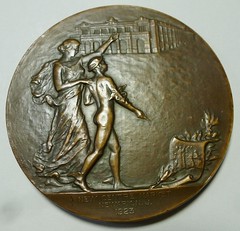

Obverse: Two figures to the left, the goddess Minerva, dressed in a flowing garment points out a large building in the distance to her shorter companion, a nude Mercury who is pointing to an open scroll at his feet. The scroll is supported by a laurel branch and depicts a standing figure before a desk with another seated behind it. There is a 3-line inscription on-center in exergue: NEW CENTRE MARKET / NEWARK, N.J. / 1923. A small KILENYI hugs the rim at 8 o'clock.
Reverse: Scene of heavy construction on a site divided by a canal with a steam shovel and a crane especially rigged for the pouring of concrete, all within a narrow raised rim. In exergue is a 3-line inscription on-center: CLIFFORD F. MACEVOY CO. / BUILDERS / NEWARK, N.J. There is a small J. HANSEN just inside the raised rim at around 8:30.
Edge: J. F. NEWMAN, INC. N.Y. BRONZE
Size: 2½-inches in diameter.
And then the story:
The City of Newark, NJ acting as its own general contractor put the New Centre Market out for bid in 1921. Clifford F. MacEvoy Construction was the low bidder for the general construction work of the building. The company bid $707,000 which was $114,000 less than the next bid. Seven companies had bid on the job. MacEvoy quickly checked his numbers and found that he had left out one entire page of calculations. In fact, if he had included the numbers on the missing page in his final sums, his bid would have been $118,000 higher and he would have lost the job by $4,000.
MacEvoy sought to be relieved from his bid and he appeared before the Newark Board of Commissioners on September 19, 1921 to testify to that effect. He said he made an honest mistake while under serious family stress. His first wife had died in childbirth in 1918 and his second wife was currently undergoing a similarly difficult pregnancy. The board acknowledged the facts of the case but refused to waive the bid citing precedent and their civic duty to the tax payer. The Board voted 4 to 1 to tender the contract to the MacEvoy Company for execution.
Clifford MacEvoy could have appealed this decision but obviously did not since he broke ground for the building just three months later on January 12, 1922. MacEvoy had to find a way to build the market within the strictures of his low bid. There is an article in a contemporary engineering journal that cites MacEvoy's specially designed hoisting equipment that allowed him to pour the concrete for the first half of the building in just three weeks. The article commends the efficiency of the concreting plant MacEvoy had devised. It was this that got the job done within the bid. Even the 1923 Manual of the Board of Commissioners stated "During the construction of the building the Clifford F. MacEvoy Company, contractors, established a record for such work by pouring 760 cubic yards of concrete in ten hours. Special aerial machinery was used to speed the handling of the concrete and other materials."
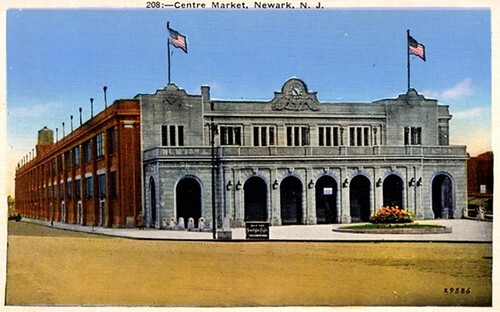
The New Centre Market, 88 Mulberry Street, Newark, NJ. was built by the City of Newark with money raised through bond issues. It was operated by the Department of Parks and Public Property. The architects were Frank Grad and George B. Hooper. Frank Grad (1882-1968).
On January 12th, 1924 two years to the day after first breaking ground on the site, Clifford MacEvoy hosted a private inspection of the New Centre Market for 500 invited guests. MacEvoy conducted a tour of the new market building after a buffet lunch. Each guest received an example of the medal as a keepsake of the occasion and as a record of events.
The medal slyly refers to Clifford MacEvoy's problems with the Newark City Commission. On the obverse the piece of paper fallen to the ground is the missing bid sheet. The paper depicts a softly modeled scene of the company secretary standing with his arms in the air in front of the builder seated at a desk covered with plans for the building. This is the moment when MacEvoy learns the bid was too low. His numbers were wrong. One of the bid sheets had fallen to the floor. Arg! There is a arm and hammer raised in the air. All is not well!
Minerva and Mercury are the main focus of the obverse to indicate that wisdom and speed are the solution to the low bid crisis and the successful completion of the building in the sky just above their heads. Julio Kilenyi sculpted this obverse and it is doubtful he did this composition in just one take.
The reverse shows how MacEvoy did it with a careful rendering of the innovative concrete hoist and chutes he conceived to do the job. The crane, located in the center of the site, towered 180 feet in the air, exceedingly high for a building that was only going to be 30 feet tall. It allowed him to raise the concrete 80 feet in the air and then direct it via chutes anywhere on the 2-acre footprint of the market site from that one location. V. Joan Hansen sculpted the reverse.
For more information about the Pennsylvania Association of Numismatists, see:
www.pancoins.org
SOME INTERESTING MEDALS: FEBRUARY 28, 2016
CHARLES LINDBERGH SOCIETY OF MEDALISTS ISSUE #4, 1931
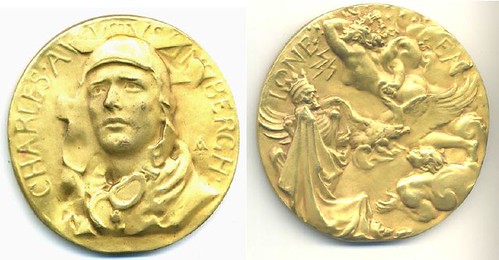
CHARLES LINDBERGH SOCIETY OF MEDALISTS ISSUE #4, 1931. SOM 4.1 , 72.5mm. Gold Plated Bronze. Frederick MacMonnies, Sc. (MACO). Bright Uncirculated. Original box & pamphlet. Obverse portrait of Lindbergh wearing flyer’s goggles and hat. The reverse is described by the artist as “an allegory of the Lone Eagle battling through the perverse elements of storm, wind and fog. The figure of Death as King, Life’s ever present tyrant, sure of his final triumph, retreats foiled and defeated. The wind tries in vain to raise a barrier against the spread and trembling wings, while the insane fury of the storm hurls lightning and veils the moon and stars in mist and rain, but the Lone Eagle goes on.”
NATIONAL ACADEMY OF DESIGN 150TH ANNIVERSARY MEDAL, 1975
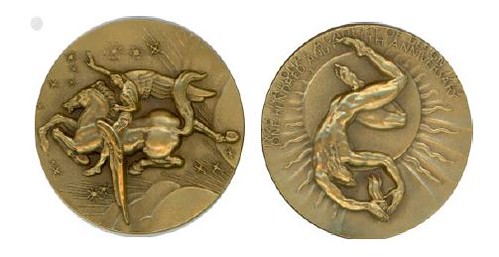
NATIONAL ACADEMY OF DESIGN 150TH ANNIVERSARY MEDAL, 1975. Alexander 17 (but unlisted in this size.) 45mm. Bronze. Donald De Lue, Sc. (MACO). Uncirculated. Obverse with a depiction of Pegasus with a rider, climbing toward the Heavens. The reverse legend: 1825 NATIONAL ACADEMY OF DESIGN 1975/ ONE
GALVANO OF THE FLAG RAISING AT IWO JIMA, 1945.
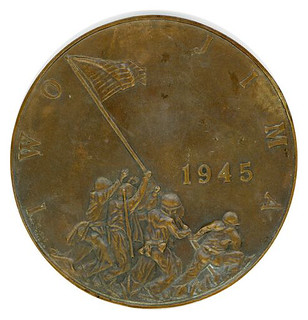
GALVANO OF THE FLAG RAISING AT IWO JIMA, 1945. 7 ¾". Bronze. W. Clark Noble, Jr, Sc. Uniface. XF. The blank reverse bears a substantial residue of glue which at one time was used to affix the bronze to a display base. This handsome piece, signed ©1945/ W.C. NOBLE, JR. is a faithful rendition in bronze of AP photographer Joe Rosenthal's iconic photograph of the raising of the US flag on Mount Suribachi on the tiny island of Iwo Jima by a group of US Marines. The legend, IWO JIMA is to either side of the flag raising scene. The date 1945 appears in the middle right field. It is unknown whether or not this bronze depicting the flag raising preceded that of Felix De Weldon's bronze tribute plaque to the motion picture industry which was also copyrighted in 1945.

SELMA FOOT SOLDIERS AWARDED CONGRESSIONAL GOLD MEDAL
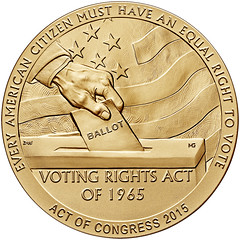
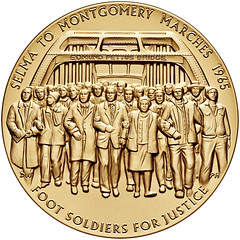
In 1962, Rev. F.D. Reese, who was head of the Dallas County Voters League and president of the Selma Teachers Association, wrote to Rev. Martin Luther King Jr. to ask that King and his Southern Christian Leadership Conference come to Selma to assist in the fight of black citizens for the right to vote.
King and the SCLC answered the call, and with Reese and a young John Lewis leading the efforts, the march to Montgomery was organized.
On Wednesday, Reese answered a different sort of invitation. This one joined him again with Lewis, now a U.S. Representative, as the two men accepted the Congressional Medal of Freedom on behalf of all foot soldiers of the Civil Rights Movement.
“I am certainly honored to be able to stand here and look into such beautiful faces, and to recall how good God has been,” Reese said. “He brought us from nowhere to somewhere. He allowed us to receive the great blessing that this great nation has to offer. And so I stand here today to say thank you.
“Had it not been for the Lord on our side, we would have perished. He allowed us to survive many dangers, seen and unseen. I don’t know what you told Him when you woke up this morning, I told him thank you.”
The ceremony was held in the U.S. Capitol’s Emancipation Hall and featured speeches by Congressional leadership, including House Speaker Paul Ryan, Senate Majority Leader Mitch McConnell and Alabama Congressional members Rep. Terri Sewell and Sen. Jeff Sessions.
Democratic Sens. Harry Reid and Cory Booker and Rep. Nancy Pelosi also spoke.
The award was bestowed upon the group of foot soldiers last year in the run-up to the 50th anniversary of the Selma-to-Montgomery March and Bloody Sunday. Many of the foot soldiers honored, including Reese and Lewis, were savagely beaten by Alabama state troopers and Dallas County Sherrif’s deputies as they attempted to cross the Edmund Pettus Bridge in Selma on their way to Montgomery.
In the most famous video footage of the attack, a 25-year-old Lewis – who along with Hosea Williams led the marchers across the bridge – was the first to be hit by law enforcement officers, suffering a skull fracture.
Three weeks later, led by King and under the protection of the National Guard, the group made it to Montgomery. By that time, the protests and violence had captured the attention of the nation, and it helped push through the Voting Rights Act of 1965.
“(King) said, ‘If you protest courageously and yet with dignity and love, when the history books are written in future generations, the historians will have to pause and say that there lived a great people who injected new meaning and dignity into the veins of our civilization,’” Lewis said during Wednesday’s ceremony. “So, thank you to each and every one of you who marched, who prayed, who never gave up, who never gave in, who kept the faith and who kept their eyes on the prize. Thank you.”
To read the complete article, see:
Selma Civil Rights leader, foot soldiers awarded Congressional Gold Medals
(www.montgomeryadvertiser.com/story/news/local/blogs/moonblog/2016/02/24/selma-civil-rights-leader-foot-soldiers-awarded-congressional-gold-medals/80868826/)
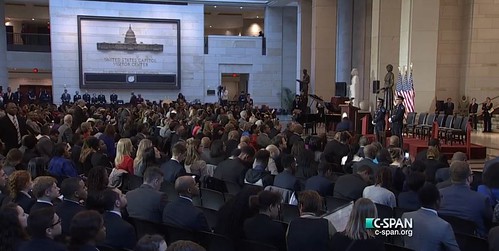
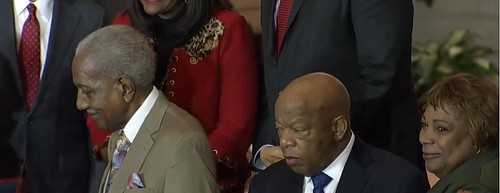
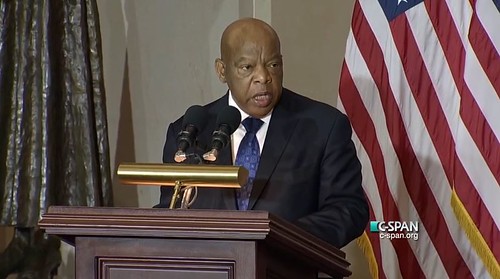
To watch the full video, see:
Congressional
Gold Medal Ceremony for 1965 Voting Rights Marches Foot Soldiers
(www.c-span.org/video/?405070-1/congressional-gold-medal-ceremony-1965-voting-rights-marches-foot-soldiers)
ARTICLE HIGHLIGHTS WWI COMMEMORATIVE DESIGN CONTEST
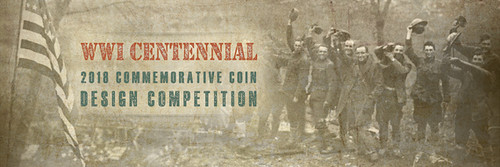
A few months ago I was surprised to learn that there are no World War I memorials that meet the strict interpretation of what a "national" monument is or should be.
I am now equally surprised to learn that "while the other great conflicts, including the Civil War, World War II [below], the Korean War, and the Vietnam War have all been memorialized on United States commemorative coins, there currently exists no coin to honor the brave veterans of World War I."
In May 2015, as part of promoting a "suitable observance" of the centennial of World War I -- a war in which more than four million Americans served and a war in which the United States suffered 375,000 casualties, including 116,516 deaths -- the World War One Centennial Commission, established by the U.S. Congress, opened an international design competition for a National World War I Memorial, to be built in our nation's capital.
Now, as part of the same commemoration of the centennial of our country's involvement in World War I, the Secretary of the Treasury has been authorized by Congress to issue a coin in 2018 to commemorate the centennial and to "honor the over 4 million men and women from the United States who served during World War I."
A coin that, in the words of Rhett Jeppson, the United States Mint's Principal Deputy Director, "will serve as a tribute to the bravery, actions and sacrifices of Americans...a coin that will also serve as a tangible means to help future generations understand and appreciate the impact of what was called 'the war to end all wars.'"
While the price has not yet been set for the 2018 commemorative coin, the 2015 prices for silver dollar commemorative coins were $51.95 for proof quality and $48.95 for uncirculated quality.
Part of the price of the coin includes a surcharge* that will go to the United States Foundation for the Commemoration of the World Wars and will assist the World War I Centennial Commission in building the National World War I Memorial mentioned above.
My only wish is that I was sufficiently artistically talented to come up with a design suitable for this prestigious competition. It is a once-in-a-lifetime opportunity. In modern history, the U.S. Mint has called upon the American public only a handful of times to submit designs for a coin.
I am certain that among our readers -- or acquaintances of our readers -- there is someone who has the talent to participate in this unique competition.
Since the modern commemorative coin program began in 1982, the United States Mint has raised more than $506,000,000 in surcharges to help build new museums, maintain national monuments like the Vietnam War Memorial, preserve historical sites like George Washington's home, support various Olympic programs, support programs such as the Boy and Girl Scouts and many more. (The U.S. Mint)
A number of great artists already participate in the Mint's programs, but maybe articles like these will find their way to other talented individuals who may not have thought to submit a design for a coin. -Editor
To read the complete article, see:
Now a World War I Commemorative Coin
(www.huffingtonpost.com/dorian-de-wind/now-a-world-war-i-commemo_b_9301874.html)
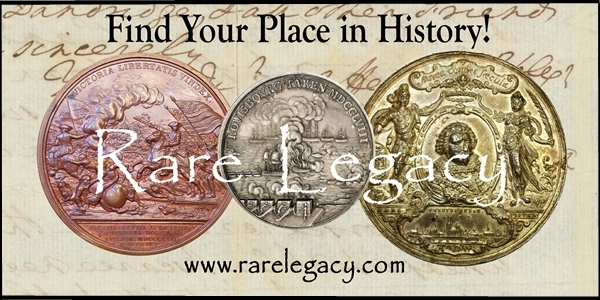
THE COST OF COLLECTING ALL 2015 U.S. MINT ISSUES
Harvey Stack pointed out an article by Joshua McMorrow-Hernandez published February 23, 2016 on CoinWeek. Thanks. The author enumerates and totals up the purchase price of all 2015 Mint issues. Here's an excerpt. -Editor
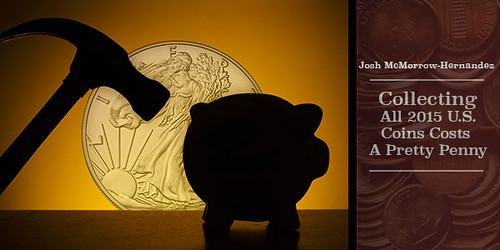
Have you ever wondered what it would cost to collect all the different coins that the United States Mint released each year? I’m not talking about the various coin sets and products, but rather one specimen of each available coin. For example, if you wanted to acquire the 2015 March of Dimes proof silver dollar and the two special 2015 proof dimes, you wouldn’t need to buy the March of Dimes proof dollar on top of the 2015 March of Dimes Special Silver Proof Set, since all three coins come in the latter.
You would, however, have to buy the individual 2015 March of Dimes uncirculated silver dollar, as that piece was sold separately.
But it goes without saying that building an entire set of coins from the U.S. Mint is much more complicated now than it was in the late 1950s, ‘60s, ‘70s, or very early ‘80s, when the Mint struck relatively small numbers of different coins and offered a quaint (and manageable) variety of products (basically just proof sets and uncirculated sets of regular-issue coinage).
Coin collectors today certainly may have more options than our predecessors had only a few decades ago. However, the large yearly selection of new coin products from the U.S. Mint today means that more and more hobbyists are becoming more and more selective about what they buy–unless they can afford shelling out thousands of dollars each year to order virtually everything in the Mint’s catalog.
And THAT’S assuming collectors can even keep track of what the Mint is offering!
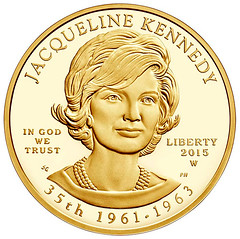 Anyway, back to my question: have you ever considered how much it would cost to collect one of each of the individual coins that the United
States Mint produces in a year? What follows is an attempt to answer that question for a specific year: namely, 2015. Here is a list of the minimum
number of products one would have to buy in order to assemble a collection of all the different 2015 U.S. Coins.
Anyway, back to my question: have you ever considered how much it would cost to collect one of each of the individual coins that the United
States Mint produces in a year? What follows is an attempt to answer that question for a specific year: namely, 2015. Here is a list of the minimum
number of products one would have to buy in order to assemble a collection of all the different 2015 U.S. Coins.
Total Coins Purchased: 292
Total Issue Price: $14,915.30
Face Value: $422.09
Numismatic Coins + Bullion Coins Purchase Price: $18,714.30
Total Face Value: $563.09
Harvey Stack adds:
I believe the excessive differently made and packaged issues with the profit that is made, is ludicrous and a bad action by our Mint.
I'll give Harvey the last word. He writes:
I know that there are sceptics as how to deal with this problem, but the unrealistic premiums that are be extracted by the Mint are unbelievable.
I needed last year two rolls of 2015 Quarters or Half Dollars for "dinner plate gifts" and was unable to locate them at the banks for face value and none of my friends stocked them. It was not the beginning of the year, but in June and July
I did, at a cost of $17.50 per roll purchase them from the Mint (face value of $10.00 a roll) and these where intended for circulation. (I ask where, only from the Mint?)
I believe that the Mint practice is getting out of hand once more, as they did from 1982 to 1995 when they issued commemoratives at PREMIUM VALUES, sold out of a few, over produced others, and if one who bought one of each of these products starting in 1982 lost over half their money by 1993. I believe the premium practices and multitude of coins issued, in various forms of packaging are excessive and should be investigated.
To read the complete article, see:
Collecting All 2015 U.S. Coins Costs A
Pretty Penny (www.coinweek.com/modern-coins/collecting-all-2015-u-s-coins-costs-a-pretty-penny/)
MONEY IN EVERYDAY EXPRESSIONS
 Money terms are used in everyday expressions with little thought about their origin. “Filthy lucre,” “put in your two cents,” “pin money,”
“a sawbuck,” “passing the buck”—all are common phrases related to money. Collectors like to reflect on what they mean and how they entered the
English language. Some are obscure, some are self-evident, others have interesting backgrounds. One that is frequently overlooked is the derivation
of the word gazette, often used as the name of a newspaper.
Money terms are used in everyday expressions with little thought about their origin. “Filthy lucre,” “put in your two cents,” “pin money,”
“a sawbuck,” “passing the buck”—all are common phrases related to money. Collectors like to reflect on what they mean and how they entered the
English language. Some are obscure, some are self-evident, others have interesting backgrounds. One that is frequently overlooked is the derivation
of the word gazette, often used as the name of a newspaper.
Few people know that today’s gazette comes from a Venetian coin of the 17th century. The coin was a 2-soldi copper piece that was called a “gazzetta.” This was a diminutive of the Latin word gaza, meaning “treasure.” These coins are about one inch in diameter and have the lion of Venice surrounded by the words SAN MARC VEN *II* on the obverse, and DALMA ET ALBAN on the reverse.
Shortly after the gazzetta was first made for circulation, Venice commenced to publish an official newspaper dealing with public affairs. The paper sold to the citizens for one gazzetta, and before long the paper itself became known as the gazzetta. The name stuck and has become synonymous with publications ever since.
The term buck, meaning a dollar, has its origin with the American Indians and early settlers who valued deerskins as a medium of exchange. A copperhead was a person in the Northern states who sympathized with the South during the Civil War, and got the name from the Civil War tokens that were made of copper and used extensively in the North. The word jitney, for a small bus, was originally a token, and later the British coin that was the price of a fare.
“Weird as a three-dollar bill” got its reputation when the government first made greenback bills in 1861 but neglected to make an anticipated note of that denomination. When the public learned that there was no such thing, anything odd or unusual was compared to the non-existing money. Pin money was originally tattered and repaired paper money of colonial America that was given to a housewife to spend for household items. It was often so worn that it had to be sewn or held together with pins, and unworthy of use by the man of the house.
In England the admonition “Spend a penny” means do not be frugal—just do it and spend the money. The expression originated with the public toilets that charged a penny toll to open the lock on the doors. “Another day, another dollar” meant just that in the early 20th century, when wages in America were one dollar for a day’s work.
This essay is excerpted from Kenneth Bressett’s popular book, Milestone Coins: A Pageant of the World’s Most Significant and Popular Money.
To read the complete article, see:
“To Coin a Phrase”: Money in Everyday Expressions
(http://news.coinupdate.com/to-coin-a-phrase-money-in-everyday-expressions/)

QUERY: COLLECTOR G. A. (BENI) BENADOM SOUGHT
Bruce Smith writes:
Does anyone have any information on collector G. A. (Beni) Benadom? In the early 1960's he wrote some articles on far eastern numismatics, including one article on the "U. S. Army Coming" secret message notes from China. His photo appears in "Bibliography of Far Eastern Numismatology" (1967) by Arthur B. Coole, Howard F. Bowker and Hitoshi Kozono, but otherwise I have found almost nothing about him. In the mid 1960's he was a ham radio operator with a military address "FPO San Francisco". He was actually in Sasebo, Japan. In the 1990's he worked for the University of Michigan -- International Institute, in the Fellowships & Financial Aid Department.

MORE ON COINS COLLECTED BY SIR ARTHUR CONAN DOYLE
David Pickup writes:
According the Encyclopaedia of British Auction Catalogues p 224 there was a Sotheby's sale on 9th May 1913 of his collection by Doyle “who is confining his collection to classical types”
Peter Preston-Morley writes:
Conan Doyle's sale took place at Sotheby's (not Christie's), on 9 May 1913, as part of a very general auction of coins totalling 175 lots.
I have a copy of the catalogue by me as I write. The Conan Doyle property occupied just 22 lots. It comprised a few European gold coins, a very disparate run of English coins and a handful of Scottish (Conan Doyle was a Scotsman, so one would have expected that). Altogether the whole collection realised under 28 GBP (in today's values 2,850 GBP, or US $4,075 at this morning's exchange rate). Not a very exciting collection!
The cataloguer did say that Mr Conan Doyle "is confining his collection to classical types" – perhaps one of your subscribers knowledgeable in the field of classical coins knows what happened to them?
Ted Buttrey of Fitzwilliam Museum Cambridge writes:
1) It was an auction of Sotheby, Wilkinson & Hodge, not Christies.
2) Cover: "Sotheby, Wilkison & Hodge / Wellington Street, Strand, London
Catalogue / of / COINS, TOKENS & MEDALS / the properties of / William Dash, Esq. of Kettering; / Sir Arthur Conan Doyla, / and other properties.
Day of Sale / Friday, the 9th of May / 1913"
3) Title Page: "[after Dash]...A small collection of / English and Foreign Coins, &c. / the property of Sir Arthur Conan Doyle. / ...[and other properties]
I.e. the Doyle coins are only a part of the sale, lots 68-89 out of a total of 175 lots. These 22 lots are a gathering of 421 coins, mostly not described and not worth describing. Scattered British from Anglo-Saxon to Charles II, some continental (gold of Charles VI and VII of France).
4) Our copy of the catalogue is annotated per lot as to price and purchaser. Only the penultimate lot 88 was properly classical, 4 dupondii of Faustina I and II, "appear to have formed part of a hoard". The ultimate lot 89 is a junk lot of 63 undescribed pieces, including some classical.
The 22 lots together brought just under £28, pretty unimportant stuff.
This information can be photocopied if anyone wants to know.
David Pickup adds:
I have looked at two modern biographies and the recent collection of his letters and none mention coins.
FOREIGN COIN REFERENCES IN SHERLOCK HOLMES
David Pickup writes:
Last week's article included some coin references in Sherlock Holmes stories. The “Red Headed League” mentions Napoleons – gold coins held in the bank that was about to be broken into. I cannot think of any other references to foreign coins.
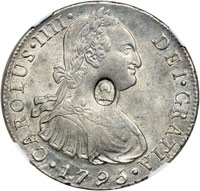 Well, there were the Bank of England counterstamps. Tom DeLorey writes:
Well, there were the Bank of England counterstamps. Tom DeLorey writes:
I have always heard the rhyme about the Bank of England counterstamped eight reales coins, commonly called "dollars" and worth about four shillings, six pence by weight, read more like this:
"The Bank, to make their dollars for five shillings pass,
stamped the head of a fool on the neck of an ass!"
Regarding other foreign coin mentions, Tom DeLorey writes:
The "Napoleons" referred to are presumably 20 Franc coins of Napoleon III, not Napoleon Bonaparte, though in reality gold reserves could have included any 19th Century 20 Francs struck up to the date of the story.
In the "Red Headed League," there is also a mention of an unspecified Chinese coin hanging from Jabez Wilson's watch chain.
In "The Valley of Fear" there is a brief mention of counterfeit U.S. gold dollars that "never passed the Philadelphia Mint."
To read the earlier E-Sylum article, see:
SOME COIN REFERENCES IN SHERLOCK HOLMES
(www.coinbooks.org/esylum_v19n08a20.html)
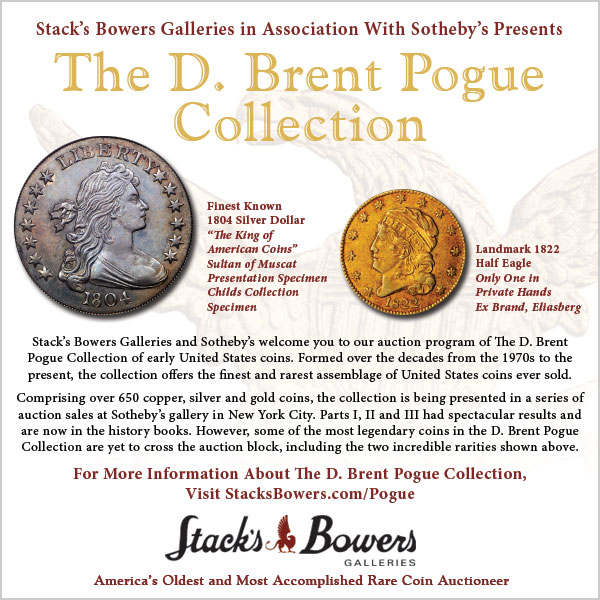
THE 2016 PALAU TIFFANY ART AMAR SAGAR 50 DOLLAR COIN
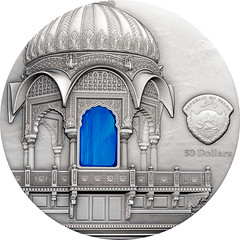
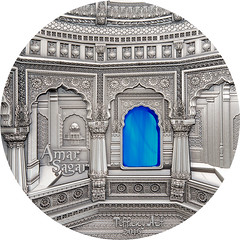
Description
The obverse of the Tiffany Art – 1 kg Amar Sagar coin shows a dome with a blue Tiffany glass window. It also features the nominal value and
the coat of arms of the issuing nation. The Tiffany Art 2 oz – Jain Art coin features the same motif on its reverse, together with the name
of the series, TIFFANY ART, the year of issue, and the inscription JAIN ART.
The 1kg reverse shows a detail from the Adeshwar Nath temple in Jaisalmer, the name of the series, TIFFANY ART, the year of issue, and the inscription AMAR SAGAR. The Tiffany Art 2 oz – Jain Art coin features this motif on its obverse as well as the nominal value and the coat of arms of the issuing nation.
Story
The twelfth edition in the popular and award-winning Tiffany Art series, which Coin Invest Trust designs for Palau, takes you on a trip to
Indian Rajasthan. Thanks to the innovative smartminting technology used in its production, the coin features an impressive wealth of detail
and a heretofore unseen relief height. The coin combines these features with the series’ typical Tiffany glass inlays.
Available in two editions, the coin depicts exceptional exemplars of Jain architecture whose centres can be found in northern and western India. The most important characteristic of this architectural style is the contrast between a relatively plain outside and a lavishly decorated inside. White and yellow marble constitute the preferred building materials.
One side of the coin depicts an honorary tomb in the form of a small dome-shaped pavilion (Chhatri). It is located near Gadi Sagar, an artificial lake that was created by Maharawal Gadsi Singh in 1367. The many surrounding temples and shrines testify to the great importance of Gadi Sagar, which functioned as a water reservoir for the nearby Jaisalmer until 1965. Connected to important trade routes, the city, which flourished between the 16th and 18th century, was a major transfer site for sugar, rice, opium, cotton etc.
For more information, see:
Tiffany Art – Amar Sagar 1kg
(www.coin-invest.li/Coins.aspx#!Keyword=Tiffany+art&ProductID=1203)
2016 COOK ISLANDS GREAT TEA RACE OF 1866 TWO DOLLAR COIN
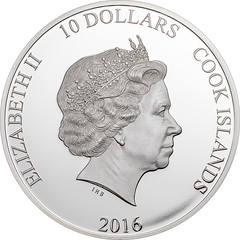
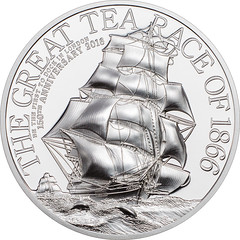
Description
The obverse shows the Ian Rank-Broadley portrait of Elizabeth II as well as her name, the name of the issuing nation, and the nominal
value.
Minted in high relief, the reverse depicts two clippers at full speed as well as the inscriptions THE GREAT TEA RACE OF 1866, BE THE FIRST TO DOCK IN LONDON, and 150th ANNIVERSARY 2016.
Story
This year witnesses the 150th anniversary of the most suspense-packed finale of the great “tea races” of the 19th century, in which English
clippers competed to bring home the new tea crop from China. In 1866, nine clippers set off from Chinese Fuzhou to London. After 99 days
and a more than 14,000-mile-long nip-and-tuck race, the “Taeping” was the first to dock, only 25 minutes before the “Ariel”.
The captain of the “Taeping”, which carried a cargo of 1,108,709 pounds, did not only win a good reputation and lucrative commissions but also a prize money of 10 shillings for each ton of tea. Not only the ship’s captain was happy about the victory, but also those who had bet money on the ship – after all, gambling has always been a favourite pastime of the English. The local tea retailers, however, were not so pleased. The market was flooded with 45 million pounds of tea and prices plummeted.
But soon the days of the tea clippers were over: When the Suez Canal was opened in 1869, they were no longer needed as transport ships. They were replaced by steamboats, which transported more cargo in the now short-cut route between China and England at a speed that the clipper captains could only dream of.
What remains unforgettable, however, is the race from 1866 that came down to the wire. For the Cook Islands, Coin Invest Trust dedicates a new coin to this special historical moment. The coin, whose motif is inspired by a Jack Spurling painting, reaches an unprecedented relief height on a proof background and minute details thanks to smartminting technology.
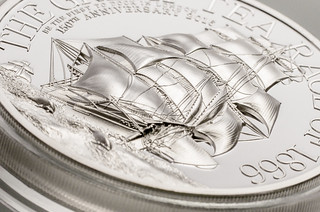
For more information, see:
The Great Tea Race – 8g
(www.coin-invest.li/Coins.aspx#!Keyword=tea+race&ProductID=1211)

HOW GOLD COINS ARE MADE
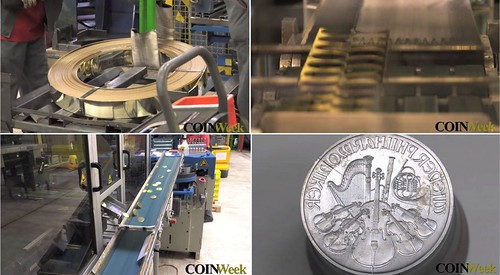
In January 2016, the Austrian Mint gave CoinWeek unprecedented access to the inner workings of their state-of-the art coining facility.
In this video, we share with you how gold planchets are made, we get to watch as a press operator replaces a pair of broken dies, we see the striking of Gold Vienna Philharmonic coins, and we get to see what the Austrian Mint’s inspection team sees when they look through the glass to make sure that each Gold Philharmonic coin packaged is absolutely perfect.
The Austrian Mint is a state-of-the art money factory and CoinWeek’s camera and microphones captured the unique sights and sounds of this amazing place.
To read the complete article, see:
CoinWeek
IQ: How Gold Coins Are Made: Spotlight on the Vienna Philharmonic Gold Coin – 4K Video
(www.coinweek.com/world-coins/coinweek-iq-how-gold-coins-are-made-spotlight-on-the-vienna-philharmonic-gold-coin-4k-video/)
COIN THIEF WAS CAUGHT USING DNA EVIDENCE
A man who stole valuable coins worth £161,000 was arrested by police after a DNA hit from a cup he drank while viewing the coins at an address in Norfolk.
Jaroslaw Piotrowski, 30, had gone to view the coins, which included an Elizabeth I gold sovereign and a Henry VIII gold sovereign, at a property in Swanton Morley after they had been advertised on eBay.
Piotrowski, who was left alone at the house by the owner when he made a phone call, ran out of the house with the coins.
But police revealed he was later arrested following a DNA hit from a cup he drank whilst viewing coins at the address.
The coins stolen included a 1642 Triple Unite; two Henry VIII Sovereigns; a James Rose Royal; an Elizabeth I Sovereign; a 1692 William and Mary Five Guinea; a 1678 Five Guinea and a 1679 Five Guinea.
Piotrowski, of Colwell Drive, Witney, in Oxfordshire, appeared at Norwich Crown Court yesterday where he admitted the theft of the coins.
The court heard that two of the coins worth £40,000 had been recovered.
To read the complete article, see:
Thief who stole £160,000 worth of coins from Norfolk address caught by DNA hit from cup he drank from
(www.derehamtimes.co.uk/news/thief_who_stole
_160_000_worth_of_coins_from_norfolk_address_caught_by
_dna_hit_from_cup_he_drank_from_1_4428892)

ARTICLE DESCRIBES QUEST FOR AUSTRALIAN HOLEY DOLLARS
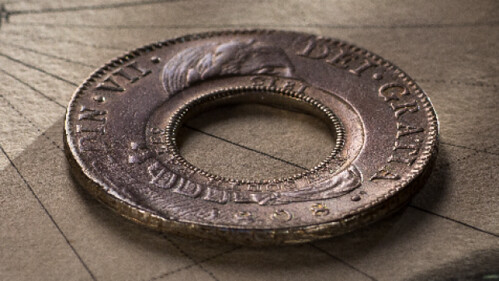
Perth coin fanciers may want to tip out their money jars and look for any that may be sporting a hole - they could be worth more than $500,000 each.
Provided, of course, the hole was meant to be there and not drilled by a handy Black & Decker.
 Cash and coin lovers will be heading to the Perth Money Expo at Domain Stadium on Saturday and Sunday where rare coin dealer Belinda Downie
will display several Holey Dollars.
Cash and coin lovers will be heading to the Perth Money Expo at Domain Stadium on Saturday and Sunday where rare coin dealer Belinda Downie
will display several Holey Dollars.
The coins were created during NSW Governor Lachlan Macquarie's reign between 1810 and 1821.
The unique coins were created from 40,000 silver dollars imported from Spain.
Governor Macquarie punched a hole in all of them to double the money supply.
The outer ring was restamped around the inner circular edge of the hole and became the 1813 Holey Dollar with a value of five shillings.
The centrepiece "Dump" was given a value of 15 pence.
Last May, Ms Downie sold a single Holey Dollar for a world record price of $550,000.
The coin expert believed there were around 300 Holey Dollars in existence.
"Some are unaccounted for. Who knows - someone in Perth could be sitting on a fortune?" she said.
"They could just be lying around in an old collection that hasn't seen the light of day in years."
The truth of that proved profitable for one Melbourne man a few months ago.
"A man came into our Melbourne office with a well-circulated Holey Dollar that had never been listed," she told 6PR's Chris Ilsley.
"He had it in his cupboard,and just decided to front up with it. We estimated it was worth around $35,000 to $40,000."
Ms Downie hopes to eventually find and detail all 300 Holey Dollars.
To read the complete article, see:
$500,000
up: Coin expert brings Holey Dollar quest to Perth's Domain Stadium (www.watoday.com.au/wa-news/500000-up-coin-expert
-brings-holey-dollar-quest-to-perths-domain-stadium-20160226-gn4oz1.html)
GAMBIA'S POOR QUALITY POLYMER BANKNOTES

The defective D20 polymer banknotes that was reported in your popular online paper in January 2016 is still in circulation albeit with worsening condition making the portrait of the president and the central bank seal fading beyond recognition. Central banks are tasked with issuing bank notes. The trust of the people in those bank notes is the essence of monetary value. When the people can no longer read or feel by touch(for those who are visually impaired) the “promise to pay on demand” clause that is printed on the obverse side of the notes to guarantee its value, then that currency note should be taken out of circulation.
As long as the currency is allowed to circulate, the once heralded polymer notes printed with ‘superior’ new technologies and improved securities have its colors smudged with faded ink. The indisputable fact is that the polymer notes are more expensive to print when compared to the usual paper- notes and such they are expected to last longer since they are made from durable plastic.
It is exactly one year ago today, 26 February 2015, that the central bank of the Gambia launched the new commemorative 20 Dalasi banknote to mark 20 years of Yahya Jammeh’s rule as president of the Gambia. According to news release from De La Rue International Limited, the firm that printed the new notes, “this is the first new note to be put into circulation in The Gambia for almost 20 years.” There is no doubt that these new notes that wear out so quickly continue to be shunned by business people, traders, farmers , taxi drivers and many Gambians making it no longer useful as a legal tender.
Public confidence is eroding fast and with increasing frequency of circulation all the writings are becoming illegible. That being case the central bank have the mandate to intervene and withdraw it from circulation otherwise many people will continue to reject them.
To read the complete article, see:
Gambia: The New 20 Dalasi Polymer
Note: (For Toilet Use Only)! (www.freedomnewspaper.com/gambia-the-new-20-dalasi-polymer-note-for-toilet-use-only/)

LONDON SHOW OF ARTIST SANTIAGO MONTOYA'S MONEY MOSAICS
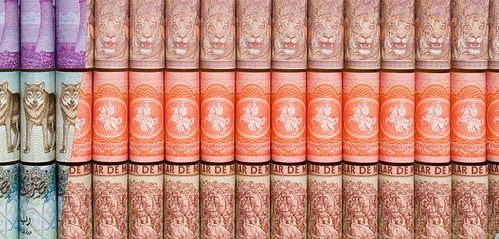
A new art collection showcasing money is inspired by the design of banknotes – perhaps to become an endangered species in a future cashless society. Colombian artist Santiago Montoya, passionate about the powerful messages conveyed by banknote iconography, is back in London with his latest work – Money Talks.
Montoya believes the design of paper money carries more beauty and tells us more about ourselves than most citizens realise when casually handling their ‘wad of cash’ every day.
Standing a few metres away from five large and colourful mosaics, one sees each of them showing the shape of a different currency – the Dollar, Euro, Yuan, Pound and Rupee. They are somehow intimidating pictures.
The Money Talks collection is at the Halcyon Gallery, in London’s chic and moneyed New Bond Street. It transmits the omniscient but cold nature of money. And the knock-on effect comes when one gets closer and discovers the images are made up of endless rows of banknote cuttings that form collages.
The symbols on the notes – patriotic heroes on horseback, religious temples, farmers, spinners, industrial ports, mythological animals – are as varied as the countries which issued them. Banknotes from different times and places turn out to be a unique reflection of values, ideologies and principles. Santiago Montoya’s work gives us the opportunity to stare at these little pieces of art and history with new eyes. He re-interprets paper currency as both a canvas as well as a raw material.
The 41-year-old artist from Bogotá, Colombia, had previously used the aesthetics of materials to introduce meaning in his works. The results are collections where appearance and concept bear equal weight – with varied international influencers such as Tom Friedman and Andy Warhol. His obsession with money and capitalist desire is also present in most of his recent work.
“Money is the meeting point of all humans on this planet. For good or bad, we are inter-related to one another through it. And it gives us pleasure as much as it makes us miserable,” explains Montoya.
Funnily enough, the man who cuts, stretches and pastes paper money to make us see its weak nature – counterpoint to its global power – is the same whose works have gone for £125,000. Maybe this is the irony of the irony. Maybe it is the cleverest way of playing the game by knowing its rules. This is an artist who critiques money and by so doing, ends up making it for himself.

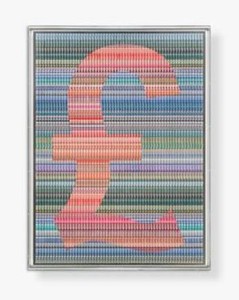
To read the complete article, see:
Columbian Artist Teaches Us That Money talks
(www.bricplusnews.com/culture/10805/)
FEATURED WEB PAGE: BRAZILIAN BANKNOTES & COINS
This week's Featured Web Page is on Brazilian banknotes & coins.All the most current Brazilian banknotes (paper money / currency) and coins in circulation are displayed below. While older coin designs remain in circulation, they are not displayed here.

www.brazil-help.com/banknotes_coins.htm

